Top '80s Songs of American Arena Rock Band Journey
- Top Artists
- Alternative Music
- Classical Music
- Country Music
- Rap & Hip Hop
- Rhythm & Blues
- World Music
- Heavy Metal
- Latin Music
Over the course of only four '80s albums, former progressive rock band turned rock balladeers Journey churned out an impressive array of hit singles and prime album tracks. Almost all are worthy of praise, but it's also notable that a handful of these tunes have not only withstood the test of time but stand up well to focused scrutiny. The best of the best of Journey may be up for debate, but the fact that the band still matters as a key arena rock prototype has by now become a matter of certainty. Here are eight reasons why presented in chronological order of release.

"Any Way You Want It"
Despite the occasional but too-frequent use of this tune in annoying TV advertising, this full-tilt rocker from 1980's Departure most definitely stands as one of Journey's finest moments as a band. After all, it serves as definitive proof that the quartet had the capacity to rock with some serious authority. I don't know why people tend to forget that Neal Schon was not only a guitar prodigy but also possesses one of the most distinctively scorching guitar styles in rock. This is one of the few Journey classics on which Steve Perry's vocals take a bit of a backseat; it's all about Schon's killer riff and his commanding solos. And what's more rock than that?
"Don't Stop Believin'"
A few years back I went through a fairly prolonged "I hate Journey, they're so lame" phase, the kind that could be put to an end only through well-placed logic. I have a friend of mine to thank for that; when she offered me a viable explication of the "streetlight people" lyric from this 1981 standout, I lost a key assumed reason to criticize this rock masterpiece. A graceful combination of muscular guitars and haunting melody, this song just works down to its core, in a way as magically mysterious as the Internet or a car engine to those of us not inclined to understand the workings of such things. So just sit back and enjoy the majesty.
"Stone in Love"
Again, anyone inclined to dismiss Journey as a cream puff band overly fond of ballads and sorely lacking rock and roll cred should give another listen to this underrated classic from 1981's Escape. In terms of rock guitar riffage, this tune earns major points for its explosive intro, but beyond that, it showcases the general tightness of Journey's core quintet of members during the band's peak period. I mean, if even Ross Valory's bass playing shines during the irresistible chorus of this nearly perfect mainstream rock song, Journey must have pretty well known what it was doing.
"Separate Ways (Worlds Apart)"
This song is essential in a total package sort of way, from the unmistakable, energizing synth opening all the way across the spectrum to its impossibly cheesy music video chock full of '80s missteps . Whatever the angle, "Separate Ways" is valuable, central '80s music listening. After all, what makes Journey's best music so constant is the consistent quality of band components, from Perry's vocal showcase to Schon's aggressive, solid guitar work to - of course - the efficient and skilled songwriting necessary to produce this song's utterly transcendent bridge and chorus. A glorious '80s moment.
"After the Fall"
Perhaps the most underappreciated vital track from Journey's peak '80s period, this tune doubles effectively as a power ballad and mid-tempo rocker. The band happened to be a master of that format during this era, but here the lines are blurred wonderfully between lighter-worthy romantic balladry and a melodic guitar-hero sing-along. Steve Augeri, Jeff Scott Soto and Arnel Pineda notwithstanding, no one ever has sounded or probably ever will sound quite like Steve Perry at his powerfully emotive best, and this distinctiveness always will be the fuel that drives Journey's greatness.
"Faithfully"
Of Journey's two blockbuster slow-dance power ballads, I've always preferred this one for its proper appropriation of Schon's nimble lead guitar work into the winning formula. That's not to say "Open Arms" doesn't have its charms, but it's certainly one of the few occasions in which the band did not use all its positive attributes for maximum impact. "Faithfully," on the other hand, authentically tackles a subject - the impact of excessive time apart on romantic relationships - with equal amounts of universality and specificity. This soft rock classic is perhaps the epitome of Journey's wide-ranging appeal.
"Girl Can't Help It"
Despite the odd move of ditching drummer Steve Smith and bassist Valory for the 1986 album Raised on Radio, the music on the last release from Journey's most successful phase maintained the band's successful formula of guitar, keyboards, and, of course, Steve Perry. This song didn't disappoint longtime fans even if they were tired of waiting for a follow-up to 1983's Frontiers, and the reasons it struck such a chord are, again, solid song structure and familiar if not groundbreaking lyrical treatment of the inherent pitfalls of romance. It's not Perry's fault his voice soars in such an irresistible way; the boy just can't help it.
"I'll Be Alright Without You"
The good thing about Journey going on hiatus following the Raised on Radio tour is that the best music on that disc measured up quite favorably with the band's highest-quality earlier material. That's actually a pretty rare occurrence when bands are wise enough to exit before inevitable decline sets in. This fine mid-tempo track arguably stands as one of the band's most impressive achievements of the '80s, blessed as it is with a compelling keyboard groove, some of Schon's tastiest lead guitar work of his long career, and another forehead-vein-protruding but the thoroughly engrossing vocal performance from Mr. Perry.
- Top Arena Rock Artists of the '80s
- The Best 100 Songs From the 1990s
- Top Bon Jovi Songs of the '80s
- 100 Best Pop Songs of the 2000s
- Top .38 Special Songs of the '80s
- Top Jefferson Starship and Starship Songs of the '80s
- Top Kenny Loggins Songs of the '80s
- Top Van Halen Songs of the '80s
- Top 10 Songs of 1981
- Top Styx Songs of the '80s
- Top Rainbow Songs of the '80s
- Top 10 Scorpions Songs of the '80s
- 8 Top Whitesnake Songs of the 80s
- Top Soft Rock Songs of the 1980s
- Top Foreigner and Lou Gramm Solo Songs of the '80s
- Top 10 Hall & Oates Songs of the '80s

Artists - A-H
- & Young
- .38 Special
- Aaron Lewis
- Aaron Neville
Artists - I-P
- Iron Butterfly
- Iron Maiden
- Izzy Stradlin
Artists - Q-Z
- Queens of the Stone Age
- Queensrÿche
- Classic Rock

- Keyboardist Jim Beard, Known for His...
- 12 Rock Legends Who Openly Dislike...
- 10 Rock Stars Who Can’t Stand...

- Legendary Motorhead Frontman, Lemmy, To Be...
- Happy 76th Birthday Tony Iommi: How...
- Metallica Secures Best Metal Performance at...

- Unveiling Stevie Ray Vaughan’s Top 10...
- Album Review: “Two Steps From The...
- The Facts In The Early Life...
The History Of Journey’s Music
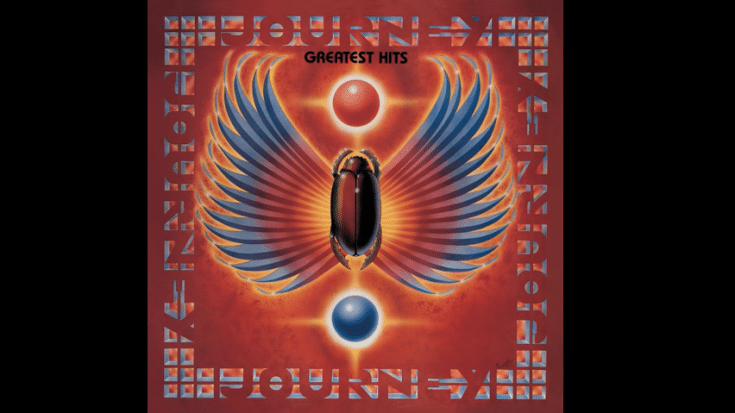
via journey/YouTube
A Long Way To The Top
Unlike other bands from the 1970s, Journey had a pretty weak start in the music industry and it took them years before they broke into mainstream and got the recognition they deserved.
They formed in 1973 and released their first album in 1975 which established their sound that fused jazz and progressive rock. It didn’t work well for them though – at least not commercially.
Guitarist Neal Schon recalls, “I still think some of the stuff we did then was great. Some of it was self-indulgent, just jamming for ourselves, but I also think a lot of other things hurt us in the early days. It took a while for the politics to sort of shape up.”
They opened for popular rock acts like Black Sabbath, Target, Judas Priest and Emerson, Lake & Palmer but fame still eluded Journey.
When they got singer Steve Perry onboard, it was clear from the get-go that he suited the band perfectly. They changed their musical approach – deciding to move towards a more commercialized sound mixing guitar-driven hard rock with pop. An early progenitor of “arena rock”, they reached their peak between 1978 and the early ’80s.
With Perry’s smooth tenor and amazing range, their songs have stood the test of time. Their first LP with him, “Infinity” was an immediate success, peaking at #21 on the US Billboard 200. It spawned the popular singles “Lights” and “Wheel in the Sky” which became a staple in their live shows.
Their fifth studio effort “Evolution” gave them their first top 20 hit in the US Billboard Hot 100 -“Lovin’, Touchin’, Squeezin'” which was partly inspired by one of Perry’s musical influences Sam Cooke. Schon’s heavy guitar work and Perry’s soulful vocals were a match made in music heaven.
They struck gold in 1981 with the release of “Escape” – the first to feature keyboardist Jonathan Cain. The LP gave them four classic hits “Don’t Stop Believin'”, “Who’s Crying Now”, “Still They Ride”, and “Open Arms”.
By this time, they have refined and perfect their sound – infectious melody, heavy riffing, face-melting guitar solos, and Perry’s soaring vocals. It wasn’t all hard rock numbers because even their ballads were something else thanks mostly to Perry’s impeccable and effective delivery.
Riding high on the success of “Escape”, they released “Frontiers” less than two years later which included four more successful singles – “After the Fall”, “Send Her My Love”, “Faithfully”, and “Separate Ways (Worlds Apart)”.
Unfortunately, it was all downhill from there. They had a couple more albums but nothing that touched the greatness of “Escape” and “Frontiers”. That’s not to say their songs are bad, they still had their moments but at the height of their career, they were simply unmatched.
Don’t Miss Out! Sign up for the Latest Updates
I love classic rock.

9 ’90s Tech Gadgets That Changed Everything
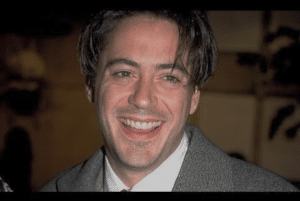
8 ’90s Celebrity Scandals That Made Headlines
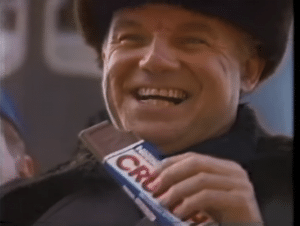
9 ’90s Commercials You Can’t Forget
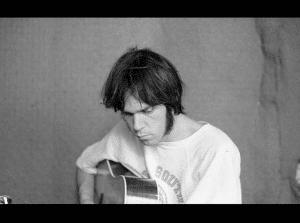
10 Deaf Musicians That Defied The Odds

Michael Anthony Reveals He Hasn’t Talked To David Lee…
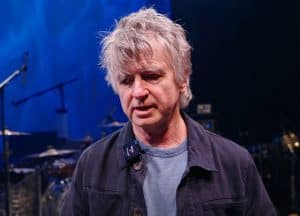
Crowded House’s Neil Finn Reveals He Auditioned For…

Peter Frampton Stunned and Speechless At Hall of Fame…
Premium partners.

Interested in becoming a partner?
Contact us for more info.

© 2024 Society Of Rock
- Terms of Use
- Privacy Policy

Bios, band histories for the greatest in rock.
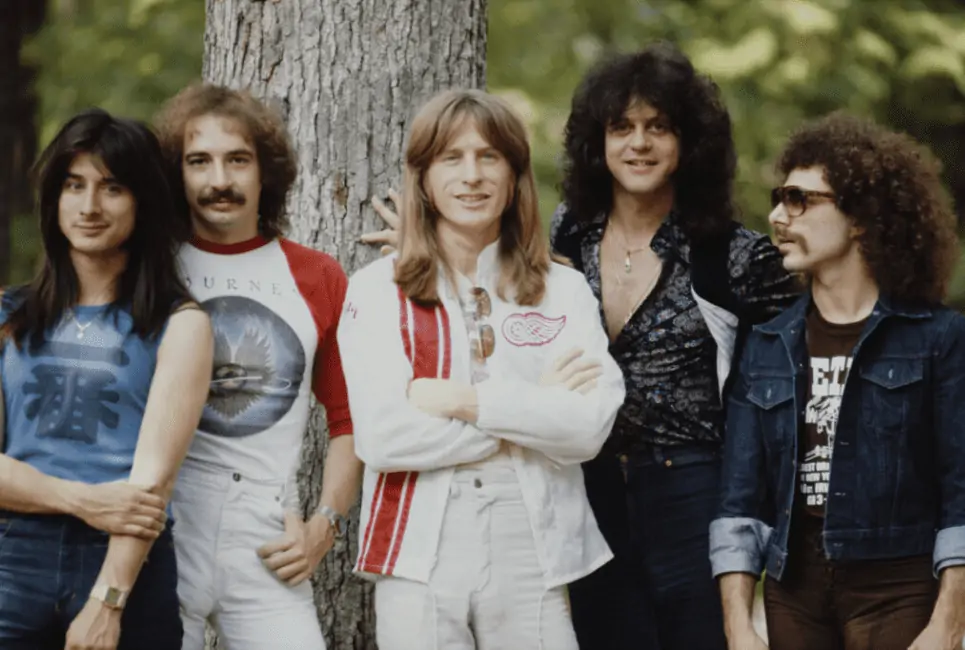
Journey Band History
- Latest Posts
- 10 Best 80s Rock Trios – When Rock Became ‘Modern’ - March 26, 2024
- 10 Best 90s Rock Trios – The Last Great Rock Trios - January 25, 2024
- Best Blues Power Trios of All Time - January 12, 2024
Journey Quick Facts Up Front
Gregg rolie, steve perry, jonathan cain, steve smith, ross valory, journey (1975); look into the future(1976); next (1977), infinity (1970), evolution (1979); departure (1980), dream, after dream (1980), escape (1981), raised in radio (1986), trail by fire (1996), arrivals (2000), revelation (2008), freedom (2022).
- Early Days Journey in their Fusion Days: Journey - Full Concert - 03/30/74 - Winterland (OFFICIAL)
- Arguably the Best Group Lineup Performing During the Escape Tour: Journey - Don’t Stop Believin’ (from Live in Houston 1981: The Escape Tour)
- A Recent Performance with Schon at the Helm. Pineda’s Vocal Performance is Stunning: Journey Live @ Lollapalooza Chicago 2021
The Journey Lawsuit & Replacements
Did journey sell out.
The glorious days of arena rock would not be as memorable without Journey. There could not be a better name for a band that went through many changes, successes, and failures and almost single-handedly rose the power ballad to the charts.
Journey’s band history is the epitome of 80s rock and the clashes between some of the most extraordinary rock musicians of the time.
Like all Journey fans, the first songs I heard were Steve Perry’s lead emotional ballads. He was the perfect singer for the ideal backing band. Yet, listening years later as a musician, I understood that it was not Steve Perry’s or Neal Schon’s Journey; the group’s creative chemistry made it all happen. Apart from the most commercially relevant period, Journey was and still stands strong. This bio might introduce you to some aspects and periods of the band that are now almost forgotten.
Journey Members You Should Know
The lineup changes are crucial to Journey’s band history. Nowadays, with only Neil Schon left as a founding member, we need to go back to the early days to understand who wrote and played the songs that made them famous.
All lineups were made up of the top rock musicians of each era. Not all, though, contribute as much as others.

Neil George Joseph Schon (born February 27, 1954, in Oklahoma) is the band’s guitar player, founding member, and occasional songwriter.
Born in a musical family, Schon soon became a child prodigy after starting playing guitar at ten and being recruited by Santana at age 17. By the time he started Journey, he had experience playing in one of the best bands in the world and was fluent in jazz, rock, and Latin music.
Neal Schon is one of the most melodic guitar players of all time. He essentially shifted my perspective of a rock solo to a musical piece that tells a story rather than a power shred, which he occasionally tastefully adds.
Schon was always the leader behind the scenes, taking a significant say in all the band’s important decisions and even personally firing and replacing members. As a solo artist, he released nine albums and founded the bands “Hardline” and “Bad English.”

Gregg Alan Rolie (born June 17, !947, in Washington) is a founding member and journey original keyboard player and vocalist. As a Santana band member, Rolie was already a senior musician by the time Schon joined. He arguably shared with Santana the same success as with Journey, singing and playing in some of their biggest hits.
He formed Journey in 1973 and co-wrote the band’s first six albums before being replaced by the pressure of Steve Perry’s musical choices.
Rolie was as essential as Schon in creating the “Journey Sound” with signature Hammond, piano sound, and a bed of synths that backed the band’s rock groove.
Rolie is one of the most prolific musicians ever, with a successful solo career after his time with the band. He founded with Journey’s ex-member “The Storm.” He was part of Ringo Star’s “All Starr Band.”
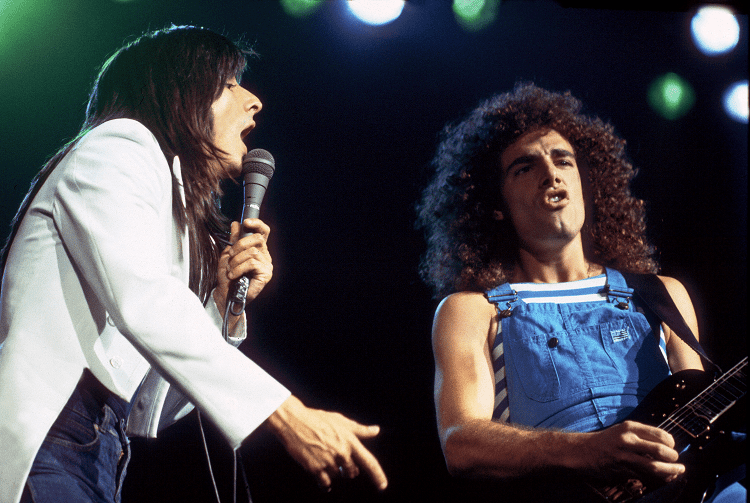
Steve Ray Perry (born January 22, 1949, in Hanford, California) was Journey’s lead singer, frontman, and main songwriter in their most successful years.
Perry’s exceptional vocal range and affinity for writing ballads and pop songs gave Journey what they needed to become the biggest arena rock band in the world. His musical beginning, though, was unsuccessful, with many failed attempts, sometimes even from misfortunes.
Manager Herbert picked up one of Perry’s demos while he had returned to working on his family’s farm and called him to perform with the band while Rober Fleischman was already hired as a singer. One song performed during soundcheck with the band sealed his place as frontman.
Perry undoubtedly came at the right time in the right band to change it all for Journey. The mental cost of fame and several misfortunes, the last a degenerative bone disease, forced him out of the band.
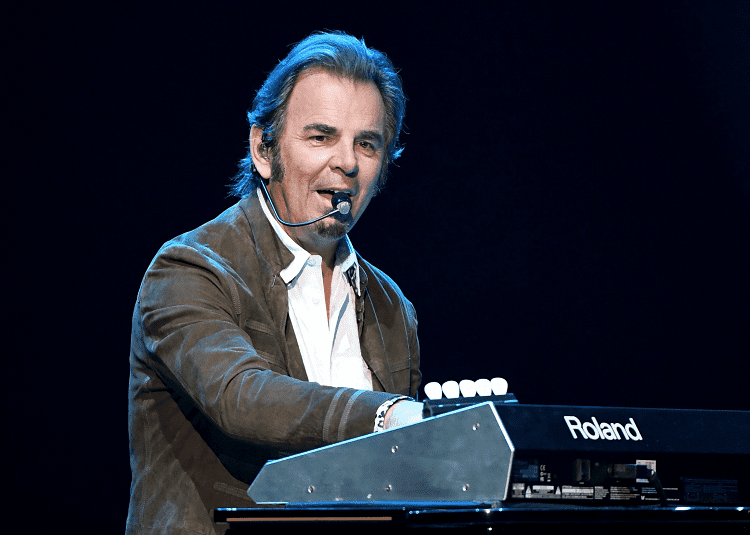
Jonathan Leonard Friga (born February 2, 1950, in Chicago, Illinois) was Journey’s most prolific keyboard player, coming in to replace Rolie and helping write the band’s most successful material.
Cain is a multi-instrumentalist who made a name for himself with the band “The Babys.” which opened for Journey. His ability to write with Perry was what convinced the singer to replace the already prolific Rolie.
Cain turned the already well-tuned Journey rhythm section into a hit-power ballad maker. Unlike Rolie, Cain’s signature is more straightforward melodic piano intros that laid the bed for tunes such as “In My Arms” or “Don’t Stop Believing.”
He was part of “Bad English” and recently started publishing Christian Rock records while serving as a Worship leader with his wife.
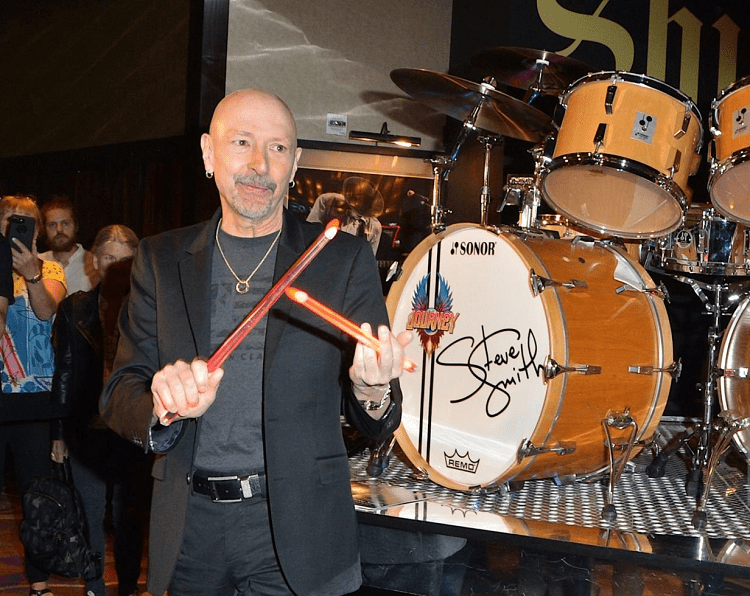
Steve Bruce Smith (born August 21, 1954, in Whitman, Massachusetts) was Journey’s drummer through their most prolific years and is widely considered one of the best musicians to ever sit behind a kit.
Smith is one of the most recorded drummers in history, having played sessions for virtually every top charting artist. He was voted five times in a row No.1 All-around Drummer from Modern Drummer magazine and inducted into the Modern Drummer Hall of Fame.
The session legend was part of three different Journey Lineups, part of Journey member’s spin-off group “The Storm,” and led his jazz-fusion groups.

Ross Lamont Valory (born February 2, 1949, in San Francisco) is a founding member of Journey and the bass player in two different lineups.
Like the other founding members, Valory played with a legendary group before forming Journey. He was part of Frumious Bandersnatch and later Steve Miller Band. He holds a special place in Journey’s history, playing in all but one studio record. Even when he was not part of the band, he was hired to write and record bass tracks.
Valory is a master bass player who uses his variation of a “Nashville Tuning,” Where the 4-string bass is tuned to B-E-A-D. He continued his career in the 90s with “The Storm,” like most original Journey members.
Journey started as the most accidental Supergroup ever in a time when the notion was still new. Ex-member of Santana and Steve Miller members got together to form their prog rock, jazz fusion band called “The Golden Gate Rhythm Section.”
The mastermind behind much of Journey’s career was their manager Herbier Herbert who previously managed Santana.
The band would perform as a backing band for Bay Area artists, with Schon and George Tickner on guitar, Rolie on Keyboards and vocals, Valory on bass, and Prairie Prince on drums. The latter would be replaced by Aynsley Dunbar around the same time Tickner quit.
The early “Journey” never achieved commercial success, mostly due to their previous musically complex influences and the lack of a strong frontman. Roli was an excellent keyboard player and vocalist, but his old-style appeal was not what the band needed to relate to young audiences.
As a band, Journey has evolved and changed more than most. It sounds like a different band from the 1st to their 14th studio album. I’ll detail most of their stunning discography according to their impact on the band and rock music.
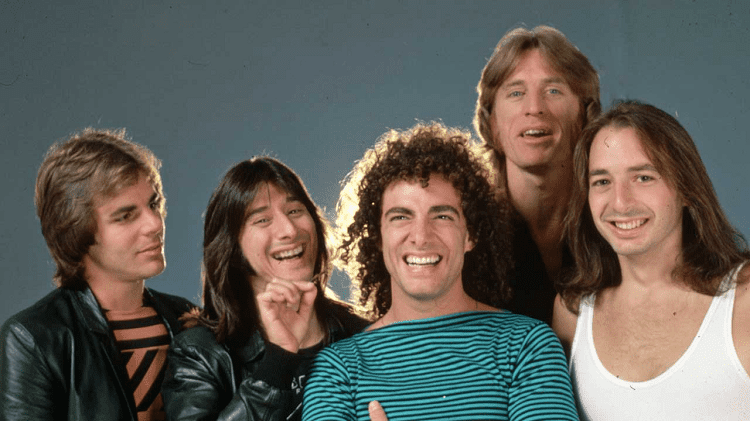
The first 3 Journey albums are a musical treat for every sophisticated rock lover. The complex compositions, delicate songwriting, and individual chops of members are three key elements that made them. There are no weak songs in any of them, yet there are not many memorable ones.
The Debut album is the ex-Santana and Steve Miller Band members having fun. The prog style might be their favorite thing to do, but as prog rock was slowly going off the charts, rock audiences needed something else.
From the first to the third album, the experimentation leaves off more place for catchy tracks. With Roli at the creative front and Herbert at the back, the band seemed to tone down their fusion influences to achieve success finally.
Commercially none of the albums did exceptionally well, and most of the band’s time was spent touring and trying to promote them.
As a guitar player and prog rock freak, I love early Journey sometimes more than the Steve Perry one. I find Neal Schon’s best guitar performances when some glimpses of jazz fusion are put in the mix.
Not to say that his later solos were less iconic, but later I found he would mainly “serve the songs” while the guitars made the song on the early Records. The same can be said about every lead instrument.
Depending on your background and taste, you could either love this version of Journey or, like many new fans, skip the three albums entirely. If you belong to the second group, I will encourage you to listen to the first song from the Debut Album, “Of a lifetime, “and you might change your mind.
The Much Needed Lead Singer
The musical chemistry, management, and inspiration were there for Journey, but their image and performances lacked the strong crowd-pleasing frontman. Behind the Keyboards, singing lead vocals, Roli did his part musically, but not stylistically.
The band’s first singer, hired with Herber’s suggestion, was glam rocker Robert Fleischman. With a high register and great stage presence, Fleischman toured successfully with Journey in 1977 until Steve Perry replaced him after he sang one in soundcheck with the band on the same tour.
Perry not only performed flawlessly exciting songs but managed to bond immediately with Neil Schon in writing their first songs together. The band changed direction and with that also their drummer. Session ace Smith replaced Dunbar, who was unhappy with the new pop direction of the band.

The first album with Perry as lead vocalist launched the band to commercial success reaching No. 21 on Billboard. “Infinity” marks the band’s change in musical direction, with Queen’s producer Roy Thomas Baker directing the shift.
The album is strong in every aspect. The songwriting, production, intent, and musicianship are top-notch. It combines the band’s collected materials and Perry’s melancholic songwriting over the years. His voice added character to the virtuoso band that needed it. My favorite song from the album is “Wheel in the Sky,” written by Fleischman and the band before Perry joined in. Perry’s voice, though, I think, does it more justice.
It starts with Neil Schon’s classically influenced guitar part and develops to a hard rock tone with a country riff. The mixture of different genres is, I think, what makes all individuals of the band shine.
The two songs that better defined the band’s musical direction were the power ballads “Lights” and “Patiently.” Slow-tempo emotional tracks with a solid vocal melody that builds up to guitar solos and live encores. Both tracks are now legendary and staples of the band’s live shows.
The following two Journey studio albums saw the band’s rise to fame, each doing better than the previous. They were headlining tours and festivals and having crowds resonate massively with their songs for the first time.
Both albums continued where “Infinity” left off, merging Perry’s now-proven hit songwriting skills with the band’s musicianship. The new frontman was now contributing to all the songs and indirectly dictating the band’s sound. Not all songs are great, though; most lack memorable hooks and fade compared to the hits.
My favorite of the two albums is “Departure.” There’s a spice more of prog rock in that album which I think brings out the best of the band. After all, the band was not originally an Arena rock act.
“Any way you want” and “Loving’, Touchin’, Squeezin;” are widely known tracks. My favorites are the less popular “Do You Recall” and “I’m Cryin,” which Perry and Rolie co-wrote.
The next record was a musical spin-off as a soundtrack album. Beyond all expectations, the band produced the most musically intricate prog rock album of their career.
It’s arguably the most polarising album of Journey’s catalog, yet one the band truly enjoyed making. The all-star band of virtuoso musicians couldn’t wait to stretch the musical muscles once again as in the old days. The result is fantastic prog rock, yet not one you would most likely hear on the radio.
I adore the compositions and musicianship on all the songs, especially the 8-minute opening track “Destiny.” In true prog fashion, extended instrumentation and solos weren’t missing.
It’s not an album for everyone, but those who like it, love it.
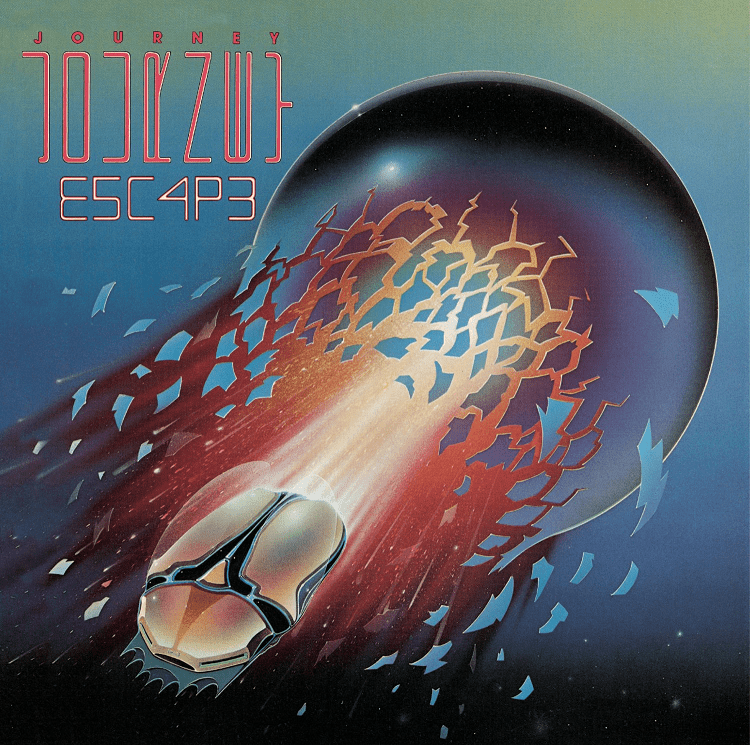
Rolie leaving the band in favor of Jonathan Cain might have consisted of one of the best musicians on earth, but it gave them the best-selling album of their career . The album almost single-handedly created the 80s sound.
The album starts with the band’s epic rock anthem, “Don’t Stop Believin’.” The song was started by Perry and Schon and later finished by Cain, who added the piano hook and hook. As Cain relieves in an interview, those were the three words his dad told him when he wanted to quit music.
The song is today the best-selling catalog track of the digital era. It’s now beyond a rock anthem to a pop culture hit. Journey’s “Free Bird” in a sense.
Cain brought in the catchy hooks and memorable piano parts and perfectly completed Perry’s ideas. The ballad “Open Arms” they wrote together differed from previous ones. It was more delicate, straightforward, catchy, and singable. After some struggles in getting it through Schoun skeptical reception of the song, it became a fan favorite.
Journey – Open Arms (Official Video – 1982)
The song that moves me the most is “Mother, Father.” Perry recorded the vocals in one mesmerizing take. What’s more impressive is that it is probably the hardest Journey song to sing.
“Espace” paved the way for the next charting album in 1983, “Frontiers.” It produced hit songs and anthems and delivered on the success of the previous albums.
Success and Downfall
Journey waited three years to release an album for the first time in their career. The continuous touring and fame were starting to kick back. Schon and Perry had also released their solo records capitalizing on Journey’s Success.
Perry, at this time, dominated the band’s musical direction completely. According to him, only Schon and Cain were suited for the band as he fired Roos Valory and, slightly later, Steve Smith. As he declared in an interview, he thought it was the best decision at the time, but he regrets doing it.
His mental health was also deteriorating as the rise to fame alienated him from the rest of the world.
Replacing both members with session musicians gave the trio more control over the songs. Perry himself took up the role of producer for the album. “Raised In Radio” is a successful attempt to top the charts through their hit song formula, but the lack of team effort is felt.
I think the album is too poppy and sacrifices the musical input of Valory and Smith for attempted hooks. There are undoubtedly hit songs such as “Girl, I Can’t Help It” and “Be Good To Yourself,” yet it’s not an album I can enjoy listening to back to back like the rest.
Commercially it did well, as expected. The band knew how to write hit songs and what the audience wanted by this time. Listening to it now, It feels like Perry’s rushed attempt to stay on top of the game and even outdo himself.
Disbandment and Attempted Comeback
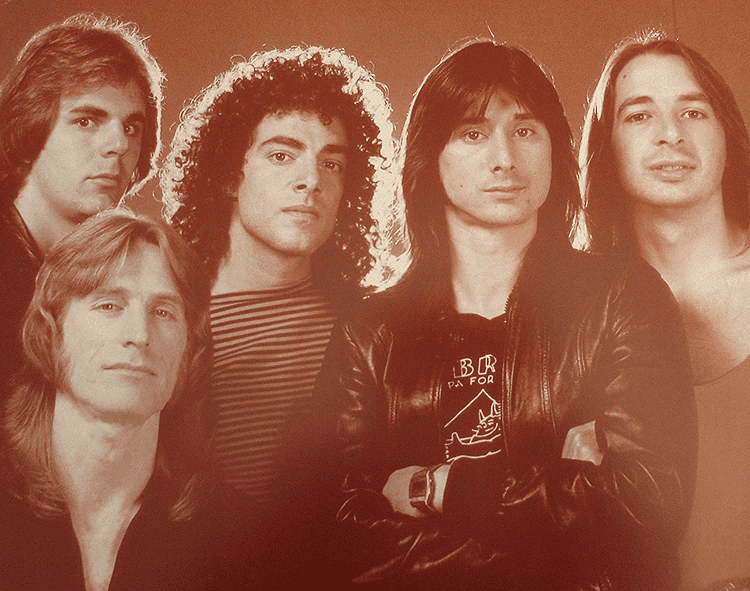
The problems with Perry’s control over the band and continuous isolated life lead to him wanting to stop everything. After his last show with the band in February 1987, he left the band and stopped Journey for almost ten years.
Perry never released an official statement, and some still wonder if the animosity between members was the main cause of his leaving. The fact that he released music after leaving the band makes me think he still wanted to make music on his own, in less frantic terms.
One thing is for sure; Journey couldn’t keep up their successful streak without Perry, so each went separate ways.
In 1995 the band reunited again at Perry’s request to fire current manager Herbert for the well-known Irving Azoff, which staged the Eagles’ comeback some years prior.
Journey was back, and a long-awaited successful album came shortly after. All members had amassed material during the years, so a musically rich album was bound to come.
“Trial by Fire” is my favorite Journey album after “Escape,” as it delivers the quality you’d expect from a great comeback. The hit song “When You Love a Woman” was surely meant to be a hit, but it’s not formulaic in any way.
Valory and Smith back on the band brought back the original backbone of the group. Putting this album back to back with its predecessor, you will notice the difference the rhythm section had in Journey after a few tracks. It gives character to songs having individual doing their thing and not hired guns.
I wish it had some more elements of hard rock, but that might be just the nostalgia from the days of “Don’t Stop Believin’.”
This album is the last Perry contribution as he was diagnosed unexpectedly with a bone condition and was unwilling to undergo surgery to continue touring.
Modern Journey

Journey is still touring and releasing albums today, with only Schon remaining an original band member. He calls the shots about the music direction and often replaces members.
After Perry distanced himself from music, the band moved on and recruited Steve Augeri as frontman, with drummer Deen Castronovo as occasional lead vocalist. Augeri was the perfect vocalist for Journey, who needed the same high-pitched power Steve Perry had.
Of the two albums Journey released with Perry, the first one is the only one that somehow matched the previous albums’ quality. It’s not the band’s most creative work, yet it’s an album with the pure Journey sound almost intact.
The album is instrumentally great but lacks strong songwriting. Augeri contributed to some songs, yet his role as the newcomer was to sing, according to Schon and Cain’s writing.
The song “World Gone Wild” is my favorite of the whole album, showing off Augeri skills at best and some great guitar work by Schon.
Commercially it did well, considering that arena rock was not the most popular genre of the early 2000s. I think that part of the merit goes to the fans’ curiosity and joy of having another Journey album.
The next album with Augeri, “Generations,” was the band’s least successful record after having him fired.
Ariel Pineda replaced Augeri in a dream story of Schon recruiting him after watching his Journey Covers on YouTube. The album was the band’s last big commercial success, even though the era of rock bands topping the charts was gone.
In true Journey style, Cain delivers a hit power ballad. “After All These Years” is just as good as any of the band’s legendary ballads and is only penalized by the rise of pop and dance music. I love how the band switched to a hard rock style for this record, flexing some fast-paced tempo grooves after a while.
Pineda seemed to be a bigger creative force than Augeri and an equally experienced live frontman. The live shows with the classic hits were and still are the band’s main focus, accumulating ridiculous amounts from the tour.
Having survived a pandemic, lawsuit, and personnel changes, Journey released their new record in more than a decade. Years of accumulated creativity resulted in an arena rock juggernaut.
Cain and Schon were in charge of the production, while drummer Narada, a prolific songwriter and singer, helped write and co-produce much of the material. It starts with the power ballad “Together We Run” and the expected melodic Cain piano intro.
Listening to album after ten other Journey pop-rock records can be too much if you’re not a die-hard fan. I would have preferred a more Prog rock Journey record as that always brings new sounds.
Notable Performances
Early days journey in their fusion days: journey – full concert – 03/30/74 – winterland (official) .
Arguably the Best Group Lineup Performing During the Escape Tour: Journey – Don’t Stop Believin’ (from Live in Houston 1981: The Escape Tour)
A Recent Performance with Schon at the Helm. Pineda’s Vocal Performance is Stunning: Journey Live @ Lollapalooza Chicago 2021
Changes in band members always come with legal issues when rights to songs are on the table. In the 80s, they maintained a good balance between members. Primarily due to solid management from Herbert, things were kept quiet.
Valory and Smith were fired from the band in 2019 after attempting to own one of the band’s corporate entities. According to the two, Perry gave them the right to hold that part of the business. Schon and Cain considered this an attempt to squeeze more money even when they were not playing.
Journey did write beautiful songs, yet the term’ corporate rock’ started to haunt them as each charting album chased the next big thing. The bad reputation arena rock gets from rock fans sometimes comes from the many attempts to write hits and please the crowd.
My stand as a rock fan with a taste from Beatles to modern metal is that Journey didn’t sell out in the sense of chasing money. Their style evolved, sometimes in search of a bigger fanbase, but still, they delivered nongeneric hits.
They developed a successful style that pushed them to recreate the success repeatedly. The members’ egos, management pressures, and fans’ high expectations had their parts.
Answer : One roadie, John Villanueva, suggested the name after failed attempts, including a radio contest involving the fans to find a proper name.
Answer : Journey had six lead singers in the band from the 70s to today.
Answer : Arena rock is considered any rock genre that can fill a stadium on a one-night event. In the mid-70s and 80s, it took a slightly different meaning, becoming a synonym for successful commercial rock bands who were best known for Power Ballads. Arena rock bands deliver great spectacles with massive crowds and often have predictable, straightforward music to resonate with as many people as possible.
- Journey (band) – Wikipedia
- Journey Documentary (Behind The Music)
- Don’t Stop Believin’: Everyman’s Journey HD
- Journey – Raised On Radio (1986 Tour Documentary)
- Journey Music
- Journey (band)
- Journey’s Neal Schon says he and Steve Perry are ‘in a good place’ before band’s 50th anniversary
- Journey Biography, Songs, & Albums | AllMusic
- Journey – The Brilliant Band Members, Stories & Struggles | Eagle 106.5
- Journey: Band Members and History
Looking for more interesting readings? Check out:
- The Police Band History
- AC/DC Band History
- R.E.M. Band History
Related Posts

The Beatles Band History
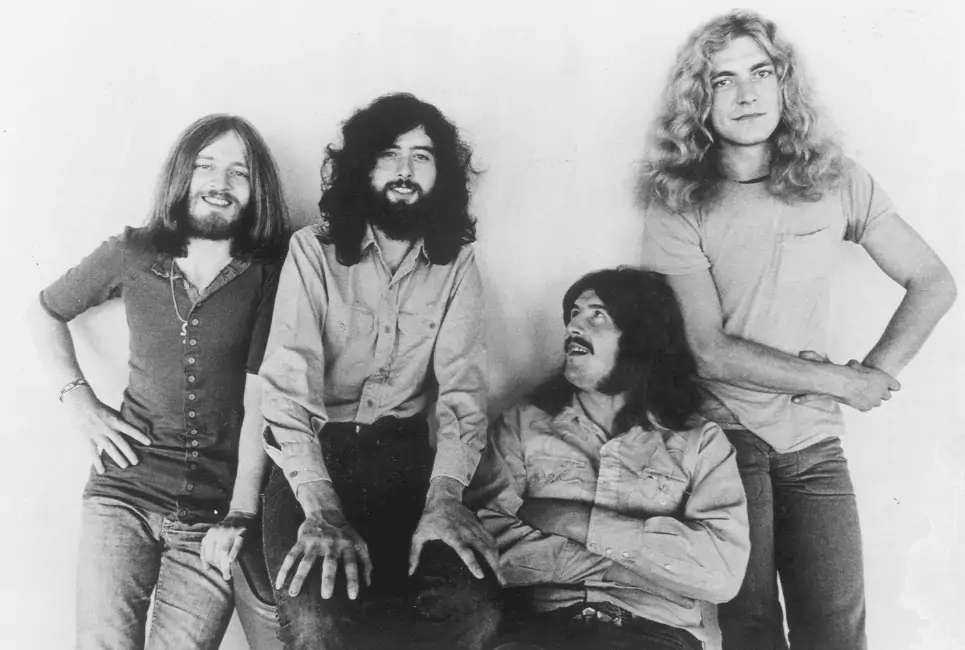
Led Zeppelin Band History
Leave a comment.
Your email address will not be published. Required fields are marked *
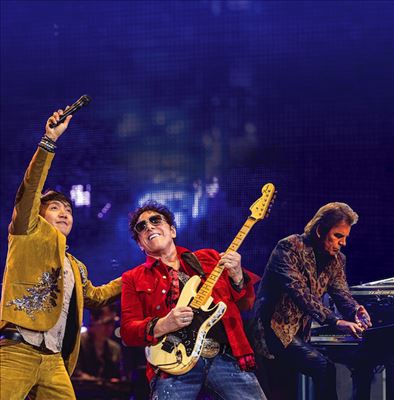
Anthemic arena rock outfit who achieved huge success in the 1970s and '80s thanks to musical prodigy Neal Schon and smooth tenor Steve Perry.
Read Full Biography
STREAM OR BUY:
Group Members
Album highlights.
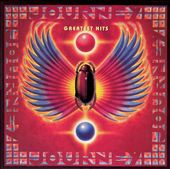
Related Artists
Discography, moods and themes, related articles.
- Best Four-Album Run in Rock
- Rock Hall 2024 Roundtable
- Geoff Downes Revives Asia
- Experience Hendrix Tour 2024
- Walsh Returns to Epiphany Scene

All 173 Journey Songs Ranked Worst to Best
Journey 's discography will always have a clear line of demarcation: before Steve Perry and after Steve Perry. That makes sense on a couple of levels. The albums they made together remain Journey's best-selling and best-loved. But, as the following list of All 173 Journey Songs Ranked Worst to Best shows, the band did important work before he arrived and it's had some perhaps overlooked successes afterward. ( Revelation , their first with current singer Arnel Pineda , was a platinum-selling No. 5 hit, for instance.)
So, we decided to take a complete accounting. Whether you're a fan of original contributions by Gregg Rolie or Jonathan Cain , George Tickner or Steve Augeri, they're all here. The only thing we left out were live takes and cover songs including Perry's version of Sam Cooke's "Good Times" from the Time3 box and Pineda's return to earlier Journey songs on Revelation . Which one will end up on top? Keep scrolling as we count them all down on the following list of All 173 Journey Songs Ranked Worst to Best.
No. 173. "Back Talk" from 'Frontiers' (1983)
This song almost single-handedly kept Frontiers from becoming Journey's best '80s album . That's enough to earn it this spot.
No. 172. "Gone Crazy" from 'Generations' (2005)
For a singer, co-founding member Ross Valory is a terrific bassist.
No. 171. "Can Do" from 'Infinity' (1978)
Actually, can't.
No. 170. "Butterfly (She Flies Alone)" from 'Generations' (2005)
Steve Augeri, Perry's first replacement, drew a bad hand. He had to follow a legend, to lead a difficult transition after Journey was dropped by Columbia Records, to endure gimmicky moves like sharing the mic with everyone in the band, then to step aside after faltering out on the road. But this misfire was all his.
No. 169. "Baby I'm a Leavin' You" from 'Trial By Fire' (1996)
If you were wondering what Journey would sound like as a reggae band.
No. 168. "Venus" from 'Eclipse' (2011)
As Journey co-founder Neal Schon consolidated his latter-day power, a long-dreamt-of goal of a guitar-focused Journey album – on hold since 1977's Next – finally came to fruition. This freed Pineda, a former cover-band singer Schon found on YouTube, from the trap of sounding exactly like Steve Perry. But it also opened the door for plenty of indulgent Schon-related moments. Eclipse inevitably ended with yet another three-and-a-half minutes of Schon.
No. 167. "Pride of the Family" from 'Generations' (2005)
Augeri had to have been dismayed as some of the best material on his second album went elsewhere – including "A Better Life," found later on our list of Journey Songs Ranked Worst to Best. But Jonathan Cain's thin, objectively lazy bonus track (he swipes a line from .38 Special ) isn't one of those times.
No. 166. "The Journey (Revelation)" from 'Revelation' (2008)
If you're wondering what Journey would sound like as a boring fusion-jazz band.
No. 165. "Human Feel" from 'Eclipse' (2011)
Eclipse at its worst took Eclipse at its best to a mind-numbing zenith. What's missing on this pummeling, endlessly propulsive track is, ironically enough, human feel. It's is all head, no heart.
No. 164. "After All These Years" from 'Revelation' (2008)
Another of Journey's undeniably well-crafted, but often un-involving later-period ballads.
No. 163. "Departure" from 'Departure' (1980)
Pretty but insubstantial, this brief instrumental was tucked into the middle of co-founding member Gregg Rolie's last proper studio effort with Journey.
No. 162. "I'm Cryin'" from 'Departure' (1980)
Perry usually had a canny ability to convey emotion. "I'm Cryin'," however, slipped off into abject mawkishness.
No. 161. "Every Generation" from 'Generations' (2005)
This is the first time Cain had been at the mic since singing lead on "All That Really Matters," a Frontiers -era leftover found elsewhere on our list of Journey Songs Ranked Worst to Best. Admittedly, he's a better singer than Ross Valory, but not Deen Castronovo – and certainly not Augeri. A missed opportunity.
No. 160. "Positive Touch" from 'Raised on Radio' (1986)
The demos for Raised on Radio were completed with a click track rather than in a room together as Journey had typically done in the past. That left drummer Steve Smith to either copy these metronomic sounds – heard to teeth-grating effect on "Positive Touch" – or to stay home. Part way through the sessions, it became the latter. "They felt that the drum machine itself was part of the compositions," Smith later complained in Don't Stop Believin': The Untold Story of Journey . "I started feeling that it wasn't a band, and it certainly didn't have the same band approach as when we wrote collectively."
No. 159. "La Do Da" from 'Infinity' (1978)
Steve Perry's initial collaborations with Schon were a revelation. So many of the group's foundational songs emerged from those initial writing sessions. And then there was this.
No. 158. "Liberty" from 'Time3' (1992)
If you were wondering what Journey would sound like as a country band.
No. 157. "Troubled Child" from 'Frontiers' (1983)
Another Side Two dud. Replace this with "Only the Young" or "Only Solutions," and all is forgiven.
No. 156. "Wildest Dream" from 'Revelation' (2008)
Schon wants to rock, and he's always talking about rocking, so every once in a while they let him rock. The results are sometimes better than those undeniably well-crafted, but often uninvolving later-period ballads. And sometimes, as with "Wildest Dream," they are not.
No. 155. "Into Your Arms" from 'Time3' (1992)
One of a pair of unfinished jams from the Raised on Radio sessions that were later completed for release as part of the Journey's Time3 box set, and the less interesting of the two.
No. 154. "Tantra" from 'Eclipse' (2011)
Pineda spends most of the album inhabiting a fresh, almost feral persona, which makes this downshift into required balladry even more jarring. He sings like it's required too, recalling every Perry tick he can manage without giving any of himself to the lyric.
No. 153. "Lady Luck" from 'Evolution' (1979)
Journey join a number of artists who have sung tracks called "Lady Luck," including Deep Purple , Rod Stewart and David Lee Roth . Come to think of it, none of those are really any good either.
No. 152. "Karma" from 'Next' (1977)
The last pre-Steve Perry album ends with a grinding, unfocused rocker featuring Schon at the mic. Changes were coming.
No. 151. "Resonate" from 'Eclipse' (2011)
There might have been a hook buried in this song somewhere. Schon's army of guitars marched right over it, though.
No. 150. "Happy to Give" from 'Raised on Radio' (1986)
Perry had trouble nailing the vocal on this too-atmospheric ballad, which should have told them something. (In fact, it got to the point where Cain started calling "Happy to Give" Perry's "pet song.") It's understandable: "Happy to Give" grew out of a soundtrack idea Cain had, and it sounds like it. Journey never played the song live.
No. 149. "Ritual" from 'Eclipse' (2011)
Imagine one of those classic-era mid-tempo Journey tracks, but in a wild-eyed 'roid rage. Settle down, boys.
No. 148. "What I Needed" from 'Revelation' (2008)
There's slightly more drama here than on the weirdly slack "After All These Years," but Journey seemed to be struggling to update their tried-and-true ballad style in Augeri's absence. Pineda co-wrote this song, but he's utterly subsumed in the trademark Journey sound. He ends up sounding like the nondescript tribute singer he once was.
No. 147. "Topaz" from 'Journey' (1975)
There's no denying the level of musicianship here. It's just not very interesting music.
No. 146. "Believe" from 'Generations' (2005)
Any good coach will tell you players have to be positioned to their strengths. So if you have Jonathan Cain available to play, you let Jonathan Cain play, right? Instead, we find Augeri at the keyboard on a repetitive song that becomes pure drudgery. "Well, I have a love and a desire to play the piano, and I love the way Jon plays and I get a chance to listen to him every night," Augeri told Melodic Rock in 2005. "So, he has influenced my writing and my arranging." Seriously, though, coach: Put Cain in.
No. 145. "Chain of Love" from 'Eclipse' (2011)
Journey spend roughly a minute and a half lulling you into thinking that they've put the sledgehammer away. Then: nah.
No. 144. "In the Morning Day" from 'Journey' (1975)
This serviceable mid-tempo song abruptly turns into mostly shapeless jam.
No. 143. "Change for the Better" from 'Revelation' (2008)
A Journey-by-the-numbers tune, kicked into another gear by Pineda's undeniable energy.
No. 142. "La Raza Del Sol," B-side of "Still They Ride" (1981)
The song's heart in the right place, as Cain finds inspiration in the plight of immigrant California farm workers. Unfortunately, that narrative is surrounded by a meandering music bed that sounds like a rightly discarded leftover from their pre-Perry days.
No. 141. "Let It Take You Back" from 'Revelation' (2008)
This was the first bonus track on Pineda's initial studio album with Journey, and a much better conclusion that Schon's amorphous instrumental "The Journey (Revelation)."
No. 140. "All the Things" from 'Arrival' (2001)
The last thing Augeri – a largely unknown Brooklyn-born singer trying to separate himself from the obvious Steve Perry comparisons – needed to be saddled with was an anonymous rocker. But that's what he was given.
No. 139. "Knowing That You Love Me" from 'Generations' (2005)
Jonathan Cain has been trying to write the next "Faithfully" since the day after he brought it into a Journey recording session. He still hasn't found it.
No. 138. "Mother, Father" from 'Escape' (1981)
An overwrought, understandably disjointed song that was pieced together from two separate ideas by Perry and Schon, then completed with another interlude written by Schon's dad.
No. 137. "I Got a Reason" from 'Arrival' (2001)
This isn't as a faceless as "All the Things," but it's close.
No. 136. "The Time" from 'Red 13' (2002)
After a promising opening track that tapped the band's Journey's early fusion-loving roots, "The Time" falls back into more comfortable, and far less intriguing, blues rock.
No. 135. "Better Together" from 'Generations' (2005)
Augeri boasts a rare co-composing credit on a Glenn Hughes -ish song that tries very hard to be heavy, to be anthemic, to be defiant. Too hard, actually.
No. 134. "Majestic" from 'Evolution' (1979)
An abbreviated multi-tracked instrumental that was used as this album's opening theme, their last with producer Roy Thomas Baker. It's probably best remembered as the taped intro music for Journey concerts during this era.
No. 133. "Colors of the Spirit" from 'Trial By Fire' (1996)
This seemed like it was going to be more intriguing. They begin (and end) with a vague world-music feel, but return to expected post '80s-era Journey-isms in between.
No. 132. "All That Really Matters" from 'Time3' (1992)
Jonathan Cain took over the mic for this Frontiers outtake, returning to a sound that's more in keeping with his earlier tenure in the Babys . That's fine, but it's not Journey.
No. 131. "With Your Love" from 'Arrival' (2001)
Unfortunately, "With Your Love" doesn't live up to the thoughtful reinvention surrounding "Loved by You," found later in our list of Journey Songs Ranked Worst to Best.
No. 130. "Homemade Love" from 'Departure' (1980)
Despite discovering a newfound chart prowess, Journey were still prone to longing looks back to their earliest musical excesses. In keeping, this sludgy, clumsily salacious song couldn't have sounded more out of place on Departure . Positioning "Homemade Love" as the album-closing song made even less sense.
No. 129. "One More" from 'Trial by Fire' (1996)
The first in a number of Trial by Fire songs that made overt faith references. That became an underlying theme on the album, sparked when Perry arrived at the sessions carrying a Bible.
No. 128. "Never Too Late" from 'Generations' (2005)
Augeri was probably relieved to learn that Castronovo didn't get all the good songs.
No. 127. "To Be Alive Again" from 'Arrival' (2001)
There's nothing too offensive about this one, but nothing all that interesting either.
No. 126. "I Can Breathe" from 'Red 13' (2002)
This often-forgotten EP was initially self-released as a thank-you note to fans after Journey lost their longtime label support from Columbia. It's formatted as a kind of four-song travelogue through their history, with a proggish track, a blues rocker, the expected ballad and a more uptempo melodic rocker. The latter is the least interesting of the bunch. Augeri is in fine voice, but he's saddled with poor material.
No. 125. "Nothin' Comes Close" from 'Arrival' (2001)
This deep into Side Two of the ballad-heavy Arrival , basically any rocker was a relief. Even one this generally unimaginative.
No. 124. "To Whom It May Concern" from 'Eclipse' (2011)
Pineda's crying vocal gives this otherwise rather mechanical slow song a notable emotional underpinning.
No. 123. "Live and Breathe" from 'Arrival' (2001)
Yes, another ballad. At this point, even Neal Schon was, like, "Dude, really?" And he was listed as co-composer on almost all of them. "Yeah, I did write a lot of music on this album with Jon and everybody else this time – a lot of ballads and a lot of rock too," Schon told Melodic Rock in 2001. "But I had no idea that, you know, they'd pick every ballad that all of us wrote, you know what I'm saying?"
No. 122. "Dixie Highway" from 'Captured' (1981)
"Dixie Highway" sounds like what it was: a throwaway track written on Journey's tour bus while traveling the eponymous interstate into Detroit. It was perhaps interesting enough to be tried out live, but not interesting enough to make it onto a studio album.
No. 121. "Livin' to Do" from 'Arrival' (2001)
This song doesn't live up to thoughtful reinvention surrounding "Loved by You," either. It nevertheless holds an important place in the band's catalog because of a strong connection with Neal Schon's father Matt, who had earlier co-writes on "Winds of March" and "Mother, Father." "It was a couple of years before he passed away, and it was one of the last things that him and I sat down on a piano and we were playing together," Schon told Melodic Rock in 2001. He presented the rough idea to Cain and lyricist Kim Tribble, "and before the day was out, that song was sitting there. We really didn't change much at all in the studio on that one from the demo."
No. 120. "It's Just the Rain" from 'Trial By Fire' (1996)
Perry achieves a sweet sense of reverie, his most favored place, but the surroundings owe too much to rather boring solo forays into smooth jazz by Cain and Schon.
No. 119. "Lifetime of Dreams" from 'Arrival' (2001)
Journey's inventive call-and-response, first vocally and then with Schon's growling guitar, lifts an otherwise somewhat rote ballad to the next level.
No. 118. "The Place in Your Heart" from 'Generations' (2005)
Augeri sings his guts out, but this kind of undistinguished Cain/Schon-composed melodic rock is why Generations sunk to a paltry No. 170.
No. 117. "Keep On Runnin'" from 'Escape' (1981)
A pedestrian rocker, "Keep on Runnin'" is the only stumble on Side One of Journey's biggest-ever selling album.
No. 116. "Trial by Fire" from 'Trial by Fire' (1996)
This track made direct reference to verses in 2 Corinthians, underscoring once again how Cain's long-dormant songwriting partnership with Perry was reborn through a shared interest in scripture. "It was refreshing," Cain later told the Christian Post . "We wrote about 'treasures in jars of clay, let the light shine in the darkness.' I thought, 'This was fresh.' That was my first encounter with scripture and music, and I have been a believer all my life." Cain later returned to the theme on 2016's What God Wants to Hear , which consisted exclusively of faith-based songs.
No. 115. "Next" from 'Next' (1977)
Journey remind you of their canny knack for achieving liftoff here, but this time it's only window dressing for a song that doesn't feel completed.
No. 114. "Remember Me" from 'Armageddon: The Album' (1998)
Steve Augeri's first song with Journey was actually a soundtrack contribution that arrived years before his official full-length debut on 2001's Arrival . "Remember Me," unfortunately, was more utilitarian than memorable. They'd incorporated a nifty soundalike, but still needed to figure out how to draw out something creative from what began as a blatantly commercial decision.
No. 113. "Still She Cries" from 'Trial by Fire' (1996)
See "It's Just the Rain."
No. 112. "Dead or Alive" from 'Escape' (1981)
The second of two throwback-style songs on Escape that seek to approximate Journey's more rugged, fusion-leaning '70s-era, and the lesser of the pair. That "Dead or Alive" came directly after the too-similar "Lay It Down" didn't do the song any favors, either.
No. 111. "City of the Angels" from 'Evolution' (1979)
"Lights," found later on our list of Journey Songs Ranked Worst to Best, was originally about Los Angeles , before Perry shifted its locale to his new home base in San Francisco. He later returned to the idea of paying tribute to L.A., with much poorer results.
No. 110. "I Can See It in Your Eyes" from 'Trial by Fire' (1996)
The obvious goal of getting the early-'80s lineup back together was to recreate the sound of that era – and they did that here. Unfortunately, it was the sound of their throwaway stuff on Side Two of Frontiers .
No. 109. "With a Tear" from 'Time3' (1992)
A leftover instrumental track from the Raised on Radio -era that Schon and Cain returned to finish in 1992. After "Be Good to Yourself," this would have been the edgiest thing on the album, had it come to fruition earlier.
No. 108. "Can't Tame the Lion" from 'Trial by Fire' (1996)
See "I Can See It in Your Eyes."
No. 107. "Kiss Me Softly" from 'Arrival' (2001)
One of four Jack Blades co-writes on Arrival , "Kiss Me Softly" started out as a much heavier vehicle for a Schon riff before the Night Ranger singer-bassist suggested they move in a different direction. It worked.
No. 106. "Escape" from 'Escape' (1981)
Cain and Perry are credited as co-composers, but the title track from Escape still feels like the first of what became a series of not-always-successful attempts by Neal Schon to balance Journey's new knack for balladry with ballsier rock songs.
No. 105. "Winds of March" from 'Infinity' (1978)
Credited to a crowd including Matt and Neal Schon, Fleischman, Rolie and Perry, "Winds of March" actually sounds like a meeting of two minds: Perry, who deftly croons his way through the first two minutes, and his new bandmates – who absolutely tear through the remaining three.
No. 104. "Someone" from 'Eclipse' (2011)
The penultimate moment on Journey's heaviest album since the pre-Perry days was – wait, what? – a pop song. And a pretty good one, to boot. It's like a fever that just broke.
No. 103. "Line of Fire" from 'Departure' (1980)
A perfunctory rocker best remembered for a sound effect at roughly the 2:10 mark that Perry cribbed from Junior Walker's chart-topping 1965 R&B hit "Shotgun ."
No. 102. "Signs of Life" from 'Arrival' (2001)
This appropriately titled song emerged from a period of deep uncertainty, when Schon and Cain were still waiting for Perry to make up his mind about rejoining Journey. "I said, Why don't we start writing?" Schon told Melodic Rock in 2001. "I mean, you know, maybe Steve will decide that he wants to come back, maybe he won't. But at least when we decide what we're going to do, and we figure out what's going on, we won't be starting right at the beginning again." Steve Augeri eventually stepped in, and they had a ready-made song to help introduce him to fans.
No. 101. "Precious Time" from 'Departure' (1980)
Rolie adds a gurgling harp squall, but not much else stands out.
No. 100. "Lay It Down" from 'Escape' (1981)
Smith approximates co-founding drummer Aynsley Dunbar's thudding, heavy-rock approach while Schon swirls into the stratosphere on one of two songs from Escape that could have seamlessly fit into a Rolie-era album.
No. 99. "Turn Down the World Tonight" from 'Revelation' (2008)
Pineda breaks the mold here, following Augeri's example of doing more with less emoting. There's another twist: "Turn Down the World Tonight" appears headed toward an almost operatic conclusion before they switch gears again, ending on a nicely placed grace note.
No. 98. "Midnight Dreamer" from 'Look Into the Future' (1976)
The book on Journey was always that Steve Perry arrived and they suddenly shook themselves awake to commercial considerations. One listen to "Midnight Dreamer," and a good portion of the album it originated from, makes a powerful counter-argument. They still stretch out – dig that crazy keyboard solo! – but "Midnight Dreamer" wasn't that far from what album-oriented radio was playing at the time.
No. 97. "Chain Reaction" from 'Frontiers' (1983)
Schon finds a fusible groove, then joins Perry for a gutty vocal interplay. But "Chain Reaction" ends up getting lost somewhere along the way.
No. 96. "Once You Love Somebody" from 'Raised on Radio' (1986)
They tried for a bluesy feel on a song echoing the relationship troubles that both Perry and Cain were then experiencing, but there's simply not enough grit to this.
No. 95. "What It Takes to Win" from 'Revelation' (2008)
Pineda lets a roughness slip into his vocal, and a little bit more of himself. "What It Takes to Win" is better for it. He was 40 when he joined Journey, a fully formed singer in his own right. He deserves a lot more of these moments.
No. 94. "For You" From 'Time3' (1992)
An important, if not entirely successful, Robert Fleischman-sung track from the demo phase for 1978's Infinity . Journey were already headed toward a more compact, radio-ready direction, even before Perry arrived.
No. 93. "World Gone Wild" from 'Arrival' (2001)
The Augeri-era Journey lineup credibly recreates a "Separate Ways"-type groove, switching things up with a spacious, inspirational bridge.
No. 92. "Never Walk Away" from 'Revelation' (2008)
Arnel Pineda came bursting out of the gates with the opening track on his first Journey studio effort, singing with power to spare. Kevin Shirley, back for his third Journey album after 1996's Trial by Fire and 2001's Arrival , turns everything up around Pineda – in particular Schon.
No. 91. "In My Lonely Feeling / Conversations" from 'Journey' (1975)
The cool interplay between Schon and quickly departed co-founding rhythm guitarist George Tickner is perhaps best showcased on this composition by Rolie and Valory. Tickner was given two subsequent songwriting credits for 1976's Look Into the Future , but was already gone by the time it was released.
No. 90. "I'm That Way" from 'Arrival' (2001)
Augeri's ability to handle this kind of lithe, very Steve Perry-esque ballad is precisely why they brought him in. Unfortunately, you'll have to search way too hard to find it: For some reason, Journey originally tucked "I'm That Way" away as a bonus track on the Japanese version of Augeri's debut.
No. 89. "Natural Thing," B-side of "Don't Stop Believin'" (1981)
Your average classic rock radio-loving fan might not peg Steve Perry as a died-in-the-wool R&B guy who can totally pull off this sometimes very un-Journey style. Tell them to start here.
No. 88. "People" from 'Next' (1977)
Journey get proggy, and it would've worked – a few years earlier.
No. 87. "Easy to Fall" from 'Trial by Fire' (1996)
Presented in their classic arena-ballad style, but without much to differentiate it from other, better, more popular iterations, "Easy to Fall" is the sound of Journey trying to sound like Journey. This would go on for a while.
No. 86. "Walkin' Away from the Edge" from 'Red 13' (2002)
Before being felled by vocal issues, Augeri was able to convey a depth, a relative darkness, that no other Journey singer since Gregg Rolie could touch.
No. 85. "On a Saturday Nite" from 'Look Into the Future' (1976)
Rolie opens their second album with an approachable, yet still tough-minded song that confidently moves Journey more toward traditional classic rock, if not all the way over to the pop-leaning sound that later sent them to the top of the charts.
No. 84. "Rubicon" from 'Frontiers' (1983)
This song drove a seemingly permanent wedge in the band. Schon was playing "Rubicon," he told The New York Times in 2003, when Perry came over and turned down his amplifiers. "They want to hear the voice," Schon remembered Perry saying. "That was the start of it for me." They put out only two more albums together, and it took them 13 years to do it.
No. 83. "Look Into the Future" from 'Look Into the Future' (1976)
Everybody was into Led Zeppelin at this point, including Journey.
No. 82. "When I Think of You" from 'Trial by Fire' (1996)
"When I Think of You" appeared on Journey's Perry-curated Greatest Hits 2 not because of its chart history, but because of what it meant to him. Perry wrote this little-known deep cut after his late mother appeared, happy and healthy, in a particularly vivid dream. "She had been sick for so long that this was what I needed to know – even if it was a dream," Perry said in a 2011 fan Q&A . "I later went to Jon Cain's and told him I wanted to write a song about this experience and started singing a melody, and we finished it together."
No. 81. "She Makes Me (Feel Alright)" from 'Look Into the Future' (1976)
"She Makes Me (Feel Alright)" builds on Rolie's album-opening foray into more digestible song structures, though Schon's metallic asides nearly push it into hard rock.
No. 80. "Loved by You" from 'Arrival' (2001)
Augeri updates the patented Journey ballad model by staying modulated, singing with a steadier, quieter certitude. That showed no small amount of guts. Problem: This was not what Journey fans wanted. Arrival stalled at No. 56, the group's worst finish since Next in 1977.
No. 79. "Mystery Mountain" from 'Journey' (1975)
"The way I look at the early Journey stuff is, if we played that now, we'd be out with Phish, or the [Dave] Matthews Band ," Rolie remembered in 2011 . "We were a great jam band." Exhibit A: their trippy debut album-closing "Magic Mountain," written by Rolie and Tickner with help from Ross Valory's wife.
No. 78. "Frontiers" from 'Frontiers' (1983)
The second-best song on this album's deflating flip side. Singing in a clipped, coolly detached tone, Perry offers a great put-down for warmongers: "War is for fools; crisis is cool."
No. 77. "In Self-Defense" from 'Generations' (2005)
A track that had been bouncing around since Schon's 1982 Here to Stay collaboration with Jan Hammer. That version showcased Journey's early-'80s lineup (minus Cain) at the peak of their increasingly rare heavy-rocking form. Same here, with Castronovo in place of Steve Smith. They miss Perry's elevating vocals during the solo, though.
No. 76. "It Could Have Been You" from 'Raised on Radio' (1986)
Schon's riffy contributions work in brilliant counterpoint to Perry's poignancy, underscoring why this partnership meshed so easily – and so well.
No. 75. "She's a Mystery" from 'Eclipse' (2011)
A lovely, Pineda co-written acoustic aside, "She's a Mystery" is that rare moment on Eclipse where Journey take their foot off the gas without swerving into power-ballad cliche.
No. 74. "Sweet and Simple" from 'Evolution' (1979)
Perry brought this dream-like song with him, having written it years before while looking out over Lake Tahoe. Journey completed it with a quickly ascending final segment that matched now-patented multi-tracked vocals with a Schon's typical pyro.
No. 73. "All the Way" from 'Arrival' (2001)
In their first album without Perry, Journey clearly had an eye on recapturing the successes they found when Jonathan Cain joined the band in the '80s. Cain was game, co-writing this instantly familiar love song with Schon, Michael Rhodes and the recently installed Steve Augeri. "All the Way" may not have been a big hit, but it showed Journey could still be Journey even without their famous former frontman.
No. 72. "Cookie Duster" from 'Time3' (1992)
Journey's label asked that they replace this underrated Ross Valory instrumental with something more commercial for 1977's Next . The album stalled at No. 85 anyway.
No. 71. "Anything Is Possible" from 'Eclipse' (2011)
On an project that boldly reanimated the wide-open heavy fusion of Journey's original '70s-era records – a period when Schon fiercely pulled and stretched his muse – "Anything is Possible" gave Arnel Pineda an opportunity to showcase his pop-star sensibilities. There's a feeling of soaring expectancy here that balances the tough, guitar-focused tracks found elsewhere on Eclipse .
No. 70. "Where Were You" from 'Departure' (1980)
There's a reason Journey opened their concerts with "Where Were You" for so long. They were just coming off an opening gig with AC/DC at this point, and clearly the headliner's knack for outsized, riffy rockers rubbed off.
No. 69. "Spaceman" from 'Next' (1977)
Co-written by Aynsley Dunbar and Gregg Rolie, "Spaceman" offers Journey fans some of the most obvious initial flowerings of a pop sensibility. They placed it first on the album, and released it as a single – to no avail. "Spaceman" failed to chart as a single, and Journey were ordered to rework their lineup. They briefly added Robert Fleischman — who arrived shortly after the album’s release, toured with the band and even received co-writing credit on three songs for Journey’s following album — but eventually settled on Perry.
No. 68. "Castles Burning" from 'Trial by Fire' (1996)
A badly needed rocker on an album that too often played down to their ballad- and mid-tempo-loving fan base.
No. 67. "Beyond the Clouds" from 'Generations' (2005)
A slow burner co-written by Steve Augeri in his final outing with the band, "Beyond the Clouds" illustrates why he was such a good initial fit. Augeri's ability to elevate, as this track zooms into the stratosphere, and then to wind down into a whispery vulnerability recalls a Certain Other Steve. This wouldn't prove to be his principal strength, but it mattered at the time.
No. 66. "Like a Sunshower" from 'Revelation' (2008)
Schon couldn't have done a better job of smoothing the way for the just-arrived Pineda than he did on "Sunshower," which begins with a lick straight out of "Stay Awhile" from Departure . Fans reacted positively, making Revelation Journey's first platinum-selling project since Trial by Fire , their last with Perry.
No. 65. "Little Girl," B-side of "Open Arms" (1981)
"Little Girl" was the most Journey-sounding thing on 1980's Dream After Dream , which isn't really part of the band's catalog since it's otherwise filled with incidental music for a now-forgotten foreign film. Elsewhere, the instrumentals provide an untimely restatement of their old penchant for prog and fusion, considering Journey were already on a pop-chart roll after the Top 25 hits "Lovin,' Touchin,' Squeezin'" and "Anyway You Want It." Unsurprisingly, Dream After Dream disappeared without a trace once Journey issued their multi-multi-platinum smash Escape a year later. This too-often-overlooked song has since became known — if it was known at all — simply as a B-side to the "Open Arms" single.
No. 64. "Out of Harms Way" from 'Generations' (2005)
A hard-nosed war song, "Out of Harms Way" was handled with an eye-opening aggression unique to Journey, thanks to the gone-too-soon Augeri.
No. 63. "It's All Too Much" from 'Look into the Future' (1976)
Journey drill down to the marrow on this throwaway piece of psychedelia, finding a seriously nasty groove beneath the Beatles ' old atmospherics.
No. 62. "Raised on Radio" from 'Raised on Radio' (1986)
Radio holds a talismanic place in Perry's imagination for two reasons. It's a constant presence in the youthful places where he returns, time and time again, for creative sustenance. If things had gone another way, he also could see himself as a DJ, rather than a huge pop star. "I love radio," Perry said in that 2011 fan Q&A. "I think the idea of playing whatever music comes to your mind and talking about it is exciting to me."
No. 61. "City of Hope" from 'Eclipse' (2011)
You could say Schon is an unstoppable force on this song, except that Pineda – in one of his most impressive vocal performances – is every bit the equal of his molten riffs. At least at first. Eventually, Schon and company step forward for a floorboard-rattling, song-closing jam that edges all the way into fusion. Journey, who saw Eclipse become the second consecutive Pineda-sung Top 20 album, haven't sounded this wide open since the Jimmy Carter administration.
No. 60. "Nickel and Dime" from 'Next' (1977)
This very Mahavishnu Orchestra-influenced instrumental was originally constructed in three parts. The final section was ultimately cut off, however, leaving a pair of segments with unusual Aynsley Dunbar signatures – thus the name, "Nickel and Dime."
No. 59. "Higher Place" from 'Arrival' (2001)
Journey again move beyond Augeri's similarities with Perry on this composition by Schon and Jack Blades, which at one point has an almost a proggy feel. In that way, "Higher Place" references the group’s previous successes, but ultimately uses them as a foundation for something new.
No. 58. "Message of Love" from 'Trial by Fire' (1996)
A continuation of the untroubled sleekness of Raised on Radio -era Journey, this could have easily passed as a Steve Perry solo track.
No. 57. "Red 13 / State of Grace" from 'Red 13' (2002)
Journey return after the soft rock-dominated Arrival with a scorching, fusion-kissed EP-opening song. They spend two minutes easing into things before launching into a wrecking-ball groove – and Augeri is with them, step for breathless step.
No. 56. "I'm Gonna Leave You" from 'Look Into the Future' (1976)
Early rhythm guitarist George Tickner – he joined after a stint in the San Francisco psych-rock band Frumious Bandersnatch with Ross Valory – wasn't around long. He left behind this intriguingly offbeat 5/4 shuffle for fans to ponder what might have been.
No. 55. "A Better Life" from 'Generations' (2005)
Poor Steve Augeri. One of the best moments on his final album with Journey is this delicately conveyed track, featuring one of Schon's more restrained turns. And Deen Castronovo on vocals.
No. 54. "Where Did I Lose Your Love" from 'Revelation' (2008)
Here's Pineda's version of the familiar arena-ballad Journey sound, which is, on one level, very much in the style of their Escape / Frontiers era. Castronovo and Cain, who co-wrote this track with Schon, even close things out with a fierce entanglement that also must have brought older fans right back to "Separate Ways." But Pineda adds a few new wrinkles along the way to ultimately move past the same old Perry comparisons.
No. 53. "Ask the Lonely" from 'Two of a Kind' (1983)
"The guy can write love songs in his sleep," Jonathan Cain said of Perry in the liner notes for Journey's Time3 box set. Unfortunately, this only-okay leftover is an example of that assembly line-type approach. That said, "Ask the Lonely" is still better than most of the stuff on the back end of Frontiers .
No. 52. "Faith in the Heartland" from 'Generations' (2005)
The urge to return to an everyday working-stiff theme has been almost unavoidable for a group that, in no small way, is best remembered for "Don't Stop Believin.'" And yet "Heartland" never slips into tribute – or, worse still, parody. Credit goes most of all to Augeri, who strikes a visceral pose on upbeat tracks like this one, singing every line as if his whole heart is in it. Unfortunately, Generations went nowhere, and Augeri – citing throat problems – was gone after just two albums with Journey.
No. 51. "Lovin' You Is Easy" from 'Evolution' (1979)
Starts out as another cookie-cutter '70s-era Journey song, then Perry gets to the ear-worm title lyric and everything changes.
No. 50. "Anyway" from 'Look Into the Future' (1976)
A dark then searching rocker from Journey's second album, featuring one of Rolie's most desirous vocals.
No. 49. "When You Love a Woman" from 'Trial by Fire' (1996)
Featuring a saccharine sentiment with a too-sweet string section to match, this is Journey balladry at its limpest. Still, "When You Love a Woman" became a gold-selling No. 12 smash. Because, Steve Perry.
No. 48. "We Will Meet Again" from 'Arrival' (2001)
Deen Castronovo's inventively layered rhythm gives "We Will Meet Again" a distinct character among Journey's more anthemic-leaning tunes, setting the stage for a moment of controlled fury from Augeri. It all builds toward a sweeping vista reminiscent of Journey's Roy Thomas Baker-helmed sides like "Winds of March" and "Opened the Door," a welcome development indeed. And as with those two 1978 tracks, "We Will Meet Again" serves as an emotionally resonant side-closing moment.
No. 47. "Don't Be Down on Me Baby" from 'Trial by Fire' (1996)
Nobody aches like Steve Perry.
No. 46. "Hustler" from 'Next' (1977)
An explosion of heavy-rocking sexuality, "Hustler" found Journey considerably toughening up its by-then-established fusion-based formula — something the group would eventually return to, but only decades later, with 2011's impressively muscular Eclipse .
No. 45. "Why Can't This Night Go on Forever" from 'Raised on Radio' (1986)
Written in tribute to their fans, "Why Can't This Night Go on Forever" moved past its quite overt "Open Arms" / "Faithfully"-style ambitions on the strength of performances by Schon and Perry.
No. 44. "Edge of the Moment" from 'Eclipse' (2011)
Castronovo and Valory create a foundation-rattling rhythm, while the big-voiced Pineda ably conveys a fiery sense of sensuality required by the song's narrative. But "Edge of the Moment" will always belong to Neal Schon, who is by turns melodic, out there, gurgling, eruptive – and nothing like we've heard from him since the days of the spaceman 'fro. Long after their hit single-making days, and a couple of albums into Arnel Pineda's tenure, Journey finally found their rock-music mojo again on this track, emerging with a sense of furious third-act abandon.
No. 43. "To Play Some Music" from 'Journey' (1975)
The most accessible song on Journey's self-titled debut, "To Play Some Music" provides a down-to-earth vocal vehicle for Rolie on an album dominated by epic, often spacey instrumentals.
No. 42. "Patiently" from 'Infinity' (1978)
Schon memorably gave Perry a ride home after sitting in with Azteca in San Francisco, but had no idea his passenger was a singer. Five years later, Perry finally got the chance to make an impression. He stopped by Schon's hotel the day after a Journey show in Denver, and they wrote this song. "It was really about the determination of me wanting to get next to those players," Perry said in the Time3 liner notes.
No. 41. "I Would Find You" from 'Next' (1977)
Schon takes a rare vocal turn with Journey, and it's his most successful.
No. 40. "Kohoutek" from 'Journey' (1975)
Named after a comet then approaching Earth's orbit, "Kohoutek" bridges the sounds that Rolie and Schon made earlier as part of Santana with those to come from their new band. Makes sense: This track dates back to Journey's earliest rehearsals.
No. 39. "You're on Your Own" from 'Look Into the Future' (1976)
Their slow-fast approach gives "You're on Your Own" a noticeably modern feel; Rolie's heartfelt singing centers it all.
No. 38. "The Eyes of a Woman" from 'Raised on Radio' (1986)
Steve Smith only appeared on three Raised on Radio tracks, but that doesn't mean he didn't have an undeniable impact. His anticipatory rhythm builds a palpable tension on the underrated "The Eyes of a Woman," as Schon's echoing chords surround the vocal. Perry has called this one of his favorite Journey songs, and that might be because "The Eyes of a Woman" is one of the very few here that fully recalls their Escape / Frontiers sound.
No. 37. "Here We Are" from 'Next' (1977)
Perhaps Journey's heaviest-ever pop song. Rolie had a knack for Beatlesque touches (see their earlier cover of George Harrison 's "It's All Too Much"), even if it was buried in a cacophony of sound from Schon and Dunbar (see their earlier cover, etc. etc.).
No. 36. "Suzanne" from 'Raised on Radio' (1986)
If Steve Perry sounds a little overwhelmed on the second single from this album, there's a reason for that. This No. 17 hit was written in tribute to an actual crush. "It was a fantasy encounter with a film star, who also had a vocal artist career," Perry said in a 2011 fan Q&A. "Just a secret person that's in the song to live forever in that song. Real or not, she's real in the track."
No. 35. "Somethin' to Hide" from 'Infinity' (1978)
Journey's first attempt at a power ballad was devastatingly effective, though it arrived years before "Open Arms." Perry's final cry is just astonishing.
No. 34. "Edge of the Blade" from 'Frontiers' (1983)
Side Two of Frontiers gets off to a roaring start. Buckle up, though. As things progress, you're in for a bumpy ride.
No. 33. "If He Should Break Your Heart" from 'Trial by Fire' (1996)
One of the best-ever meldings of Solo Steve (verses) and Journey Steve (the rest).
No. 32. "Be Good to Yourself" from 'Raised on Radio' (1986)
A throwback Top 10 rocker, "Be Good to Yourself" had little in common with the sleeker, more adult-contemporary feel found elsewhere on Raised on Radio . It didn't make for the most representative lead single, but manager Herbie Herbert prevailed. "[Perry] phoned me at my house, and just went nuts about 'Be Good to Yourself' having been the first choice of a single," Herbert told Melodic Rock in 2008. "And I said, 'It's a great song, it's a great production, it's great sound – it's Journey.' That was the problem: It sounds too much like Journey. Well, too many of the other songs sound too much like a glorified Steve Perry solo record."
No. 31. "Of a Lifetime" from 'Journey' (1975)
Journey's recorded output begins here, with a seven-minute jazz fusion-influenced, at times Pink Floyd -ish excursion that boldly stepped away from Rolie and Schon's previous work in Santana. "Talking about Santana screws up the whole concept of everyone in this band," Rolie lamented in Don't Stop Believin' . "A lot of people would come to see us and expect conga drums. The last thing I was to see for the rest of my life is conga drums!"
No. 30. "I'll Be Alright Without You" from 'Raised on Radio' (1986)
Schon, who earned a co-writing credit with Cain and Perry, tried out a then-new guitar in search of a distinct sound for this song. Best known for using a 1963 Fender Stratocaster, Schon experimented with a graphite Roland 707 to see if he could get a different, more even tone. It worked: "I'll Be Alright Without You" remains Journey's penultimate Top 20 hit, followed by 1996's "When You Love a Woman." Cain, like Perry, was going through a breakup and called this track the other half of the emotions expressed in "Once You Love Somebody."
No. 29. "Only Solutions" from 'Tron' (1982)
Unjustly forgotten, and barely used in the film at all, the hooky "Only Solutions" would have greatly enlivened what turned out to be a letdown on Side Two of Frontiers .
No. 28. "People and Places" from 'Departure' (1980)
A circular vocal effect makes the song's larger point, as Perry and Schon share a vocal that examines life's maddening duality.
No. 27. "Opened the Door" from 'Infinity' (1978)
The last song on the first album to feature Perry, "Open the Door" begins like every gorgeous, ear-wormy love song they ever hit with a few years later — but after Perry's initial three minutes, Rolie joins in a huge vocal bridge ( "Yeah, you opened ..." ), and from there Schon and company are loosened from those binding conventions. Drummer Aynsley Dunbar, on his final recording date with Journey, sets a thunderous cadence, and Schon powers the song — and this career-turning album — to its quickly elevating conclusion.
No. 26. "Faithfully" from 'Frontiers' (1983)
Cain has said this No. 14 power-ballad smash, written in tribute to a happily married musician's life on the road, came from nowhere – literally. "He told me he got the melody out of a dream," Schon later mused in the Time3 liner notes. "I wish something like that would happen to me." Cain wrote it in his own key, and that allowed Perry to explore a different vocal timbre. They finished the song with a memorable back-and-forth between Perry and Schon, also completely unrehearsed.
No. 25. "When You're Alone (It Ain't Easy)" from 'Evolution' (1979)
Perry chirps and coos his way through this winking tease of a song – that is, until about a third of the way through, when Schon provides a moment of release.
No. 24. "Forever in Blue" from 'Trial by Fire' (1996)
As with "Girl Can't Help It," found later on our list of Journey Songs Ranked Worst to Best, "Forever in Blue" represents that rare moment when the latter-day edition puts it all together again.
No. 23. "Wheel in the Sky" from 'Infinity' (1978)
He never got much credit, but Robert Fleischman played an important role in Journey. "Wheel in the Sky," the band's initial Billboard chart entry, was originally a poem written by Ross Valory's wife – until Fleischman rounded it into song form. Schon added a guitar melody, and they handed it to Steve Perry after Fleischman's ouster. The rest is, as they say, history.
No. 22. "Walks Like a Lady" from 'Departure' (1980)
A great example of the way Journey songs evolved in the studio. Perry brought in a rough sketch, Schon added a blues-inspired riff, then Smith picked up his brushes. All that was left to complete things was Rolie's greasy Hammond B3 groove, reportedly one of his favorites.
No. 21. "Too Late" from 'Evolution' (1979)
A delicate, beautifully conveyed song of encouragement, "Too Late" was aimed at a friend of Perry's who had fallen into drug abuse.
No. 20. "Girl Can't Help It" from 'Raised on Radio' (1986)
Perry essentially took control of Journey in the run-up to this album, switching out band members for sidemen with whom he'd worked before then serving as the project's de facto producer. That led them to some song treatments that moved well away from anything Journey had done before, or since. "Girl Can't Help It," one of three Top 40 singles from Raised on Radio , was the exception. This was classic Journey, spit-shined up for a new era.
No. 19. "After the Fall" from 'Frontiers' (1983)
Perry began this song on the bass, perhaps an early indication of the changes in store for Journey. By the time they released 1986's Raised on Radio , Ross Valory had been replaced by Randy Jackson, later of American Idol fame. Smith departed too, but not before proving himself utterly invaluable here.
No. 18. "Good Morning Girl" / "Stay Awhile" from 'Departure' (1980)
Inextricably linked by their successive appearances on Departure , these two songs showcased Perry's dual gifts: "Good Morning Girl" was a fragile, impossibly beautiful ballad that emerged from a jam session with Schon, while "Stay Awhile" showed off his R&B chops.
No. 17. "Who's Crying Now" from 'Escape' (1981)
The initial single from Escape , a No. 4 hit, perfectly illustrates how Jonathan Cain's new presence changed Perry's writing style, then forever changed Journey. The first inklings of the track came to Perry as he was driving up to San Francisco on Route 99. But "Who's Crying Now" was a song with no real direction until Cain suggested the title. They worked out a cool b-section featuring only voice and keyboard, and their very first co-written composition was completed. "He helped me go to another place as a writer," Perry later gushed in the Time3 notes. Inspired, Perry also fought to keep Schon's extended guitar solo on the single.
No. 16. "Do You Recall" from 'Evolution' (1979) Maybe the perfect blending of Journey's tough early sound and Perry's sun-flected sense of reminiscence. Roy Thomas Baker's familiar stacked vocals propel the bridge to untold heights.
No. 15. "Someday Soon" from 'Departure' (1980)
The final major vocal collaboration featuring Perry and the soon-to-depart Rolie and, still, one of the more memorable for its thoughtful optimism. There were plenty of reasons for this upbeat outlook, even though "Someday Soon" appeared on Journey's next-to-last album with Rolie. Departure reached the Billboard Top 10, then the band's highest-charting effort ever. Meanwhile, a subsequent, wildly successful tour was chronicled on 1981's Captured .
No. 14. "Open Arms" from 'Escape' (1981)
If you dislike power ballads, blame Jonathan Cain. He brought this seminal example of the genre to Journey after John Waite , the frontman in Cain's former band the Babys, rejected an early version. Schon didn't really want "Open Arms," either. But Perry intervened, and they turned it into a soaring paean to renewal. Oh, and Journey's highest-charting single ever.
No. 13. "Lovin', Touchin', Squeezin'" from 'Evolution' (1979)
A song with a real-life storyline, "Lovin', Touchin', Squeezin'" came to life in another Journey jam session, then went on to become their very first Top 20 hit. Rolie's Nicky Hopkins-esque honky tonk piano rides atop a stuttering, 12/8 rhythm, building inexorably toward a cloud-bursting nah-nah-nah conclusion. Steve Smith has compared that blues shuffle to "Nothing Can Change This Love" by key Perry influence Sam Cooke. The heartbroken Perry, who's described the writing of this song as "love justice," again played the bass on the initial sessions. The results opened the pop-chart floodgates.
No. 12. "Still They Ride" from 'Escape' (1981)
A touchingly emotional trip back to Perry's San Joaquin Valley youth, "Still They Ride" showed that the seemingly ageless Escape could still produce a Top 20 single, more than a year after its release.
No. 11. "The Party's Over (Hopelessly in Love)" from 'Captured' (1981)
"After I left," Rolie later mused , "it became more pop rock. It was a little heavier when I was in it." That transformation started with "The Party's Over," a Top 40 studio song tacked onto a live project which marked Rolie's exit. Journey's original keyboardist doesn't even appear on the track. Instead, the session featured Stevie "Keys" Roseman, who was later part of VTR with Ross Valory and George Tickner.
No. 10. "Stone in Love" from 'Escape' (1981)
Schon had a tape recorder going while he fooled around with the guitar during a party at his house in San Rafael. Perry and Cain did the rest.
No. 9. "Daydream" from 'Evolution' (1979)
An episodic triumph, "Daydream" is defined by dreamy, Jon Anderson -esque verses, rangy guitar riffs and forward-thinking keyboard asides – very much in keeping with the prog-rock pretensions of the '70s, though that sound had already become decidedly passe.
No. 8. "Separate Ways (Worlds Apart)" from 'Frontiers' (1983)
Cain and Perry looked on, feeling a little helpless, as Valory and Schon endured painful divorces. "There's got to be a more soulful way of looking at this," Perry countered in the Time3 liner notes. Just like that, the pair had the makings of the Top 10 opening single from Frontiers . "Separate Ways (Worlds Apart)" so energized Journey that they began performing it onstage before Perry had completely learned the words.
No. 7. "Just the Same Way" from 'Evolution' (1979)
Built off a Rolie piano riff, "Just the Same Way" once again leveraged Journey's layered harmony vocals, already a trademark of producer Roy Thomas Baker from his previous work with Queen . Baker achieved this effect by having Perry and Rolie double and triple their parts, an incredibly time-consuming new approach that almost derailed "Anytime." (Rolie and Schon still considered themselves jam guys at this point.) But that's what ultimately gave this song – and Journey themselves – such a striking propulsion.
No. 6. "Send Her My Love" from 'Frontiers' (1983)
One of four Top 40 hits found on the album, the lonesome No. 23 anthem "Send Her My Live" is notable for an ambient turn by Schon (he used a high-end Lexicon 480L echo unit) and perhaps the most intriguing drumming contribution on Journey's string of familiar ballads from Steve Smith. A jazz lover who later founded his own combo, Smith added a slyly involving polyrhythm lifted from Miles Davis' "In a Silent Way." "The drummer on that was Tony Williams," Smith said in 2011 , "and he played quarter notes with a cross-stick on the snare drum — a very hypnotic groove." Same here.
No. 5. "Only the Young" from 'Vision Quest' (1985)
Another song that, had it been included, might have pushed Frontiers past Escape as Journey's best Cain-era album. Instead, "Only the Young" appeared much later on this soundtrack, and by then Kenny Sykaluk – a 16-year-old fan suffering from cystic fibrosis – had already died after becoming the first person to hear it . "Only the Young," which opened every concert on Journey's subsequent tour, will be forever associated with his brave fight.
No. 4. "Lights" from 'Infinity' (1978)
Perry had an early version of this song in his back pocket when he joined Journey, and it's a good thing. Rolie has said that the rest of the band wasn't sold on Perry until they harmonized on "Lights" while backstage at the Swing Auditorium in San Bernardino. "It dawned on me right then," Rolie later admitted in the Time3 notes, "that this could really be great."
No. 3. "Any Way You Want It" from 'Departure' (1980)
Perry said the vocal and guitar interplay on "Any Way You Want It" was inspired by the performances of Phil Lynott , after Thin Lizzy opened for Journey. "I loved his ability and phrasing," Perry revealed in Open Arms: The Steve Perry Anthology . "This guy is one of the more under-recognized geniuses of that era." Perry and Rolie brought a tight focus to the bursts of shared vocals that close things out, fashioning Journey's second-ever Top 40 hit.
No. 2. "Don't Stop Believin'" from 'Escape' (1981)
It difficult to believe, considering how rightfully ubiquitous this anthem has become, but "Don't Stop Believin'" originally only barely cracked the Top 10. What's up with that, 1981?
No. 1. "Feeling That Way" / "Anytime" from 'Infinity' (1978)
These paired songs took a convoluted path to the top of this list, as everyone worked and reworked both halves into a legacy-defining moment for Journey and their new singer. "Feeling That Way" began as a Rolie track called "Velvet Curtain" then evolved into "Let Me Stay," which was considered for Next . When Perry arrived, he added a gliding new chorus, and they were halfway there. Meanwhile, the Fleischman co-written "Anytime" – released as a separate, No. 83-charting single but forever linked on the album and rock radio – was going nowhere. At one point, Journey almost dropped it altogether. Then Schon decided to tap the music of his childhood by adding a Beatlesque lyric, " Anytime that you want me ." The then-new mixture of Perry and Rolie's voices did the rest. "As soon as the vocals were put in, the song came alive," Rolie remembered in 2014 , laughing. "I'm glad we didn't can it!" The results meld every great thing about the band's earthy first era with the pop-facing second era to come. In that way, it's the perfect Journey moment.
Think You Know Journey?
More From Ultimate Classic Rock


All Inductees >
INDUCTED BY
Pat Monahan
Call the style what you will-arena rock, stadium rock, concert rock-Journey dominated in the ‘70s and ‘80s.
Journey performed ballads and scorchers with equal skill and passion led by Neal Schon’s remarkable guitar and the soaring vocals of Steve Perry.
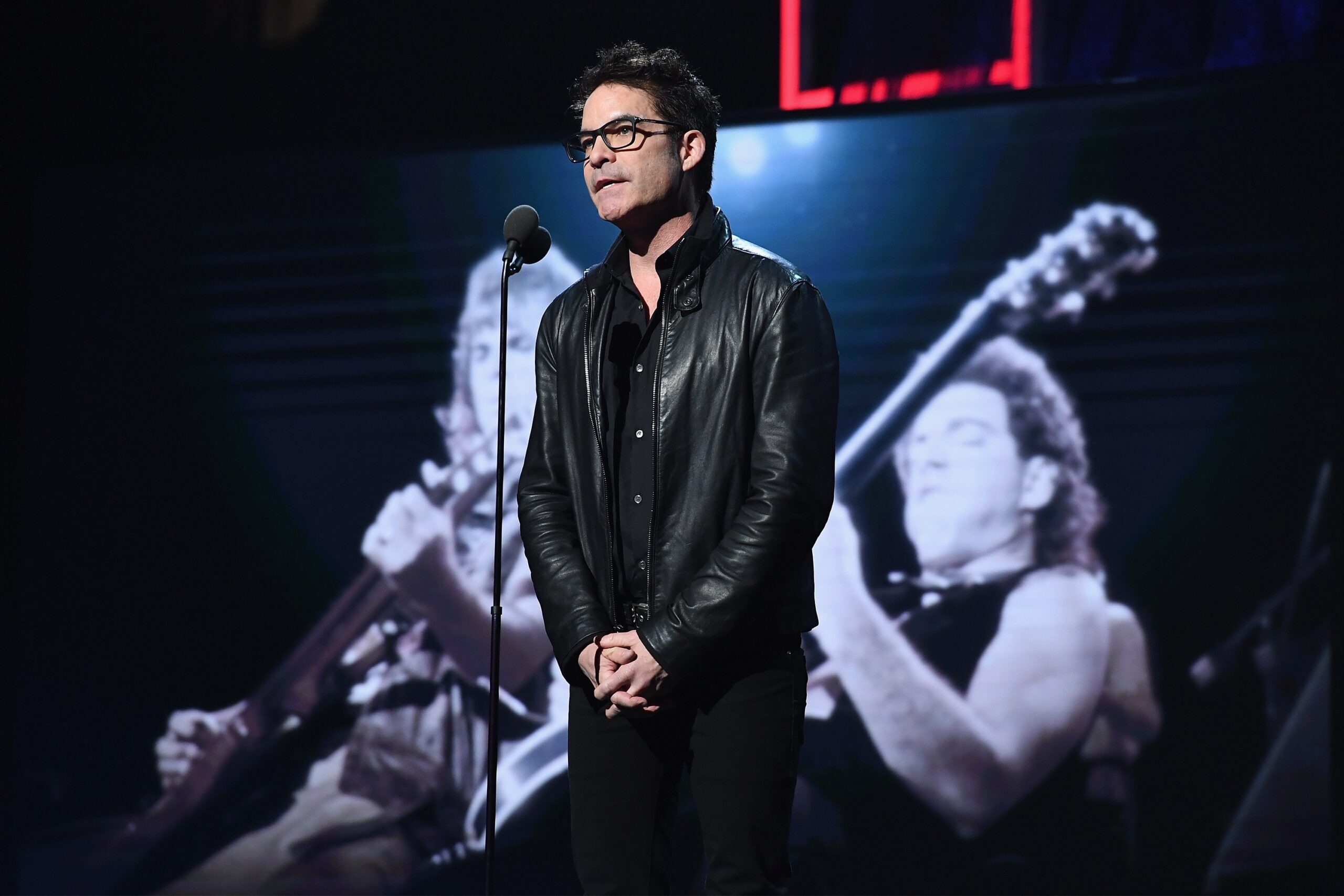
HALL OF FAME ESSAY
By Robert Bourke Warren
In the seventies, and especially the eighties, rock music became an international force, with album sales resulting in packed arenas and stadiums.
Thanks to technology and a shrinking globe, bands suddenly reached untold millions; a hit song, beamed via satellite from culture to culture, could now touch hearts globally. Few groups embraced such unprecedented reach with as much enthusiasm and skill as Bay Area-based Journey.
The Californians not only rode the tsunami wave with panache, they created a template for bands aspiring to this level of engagement with fans. Most impressive, they are still at it, four decades on.
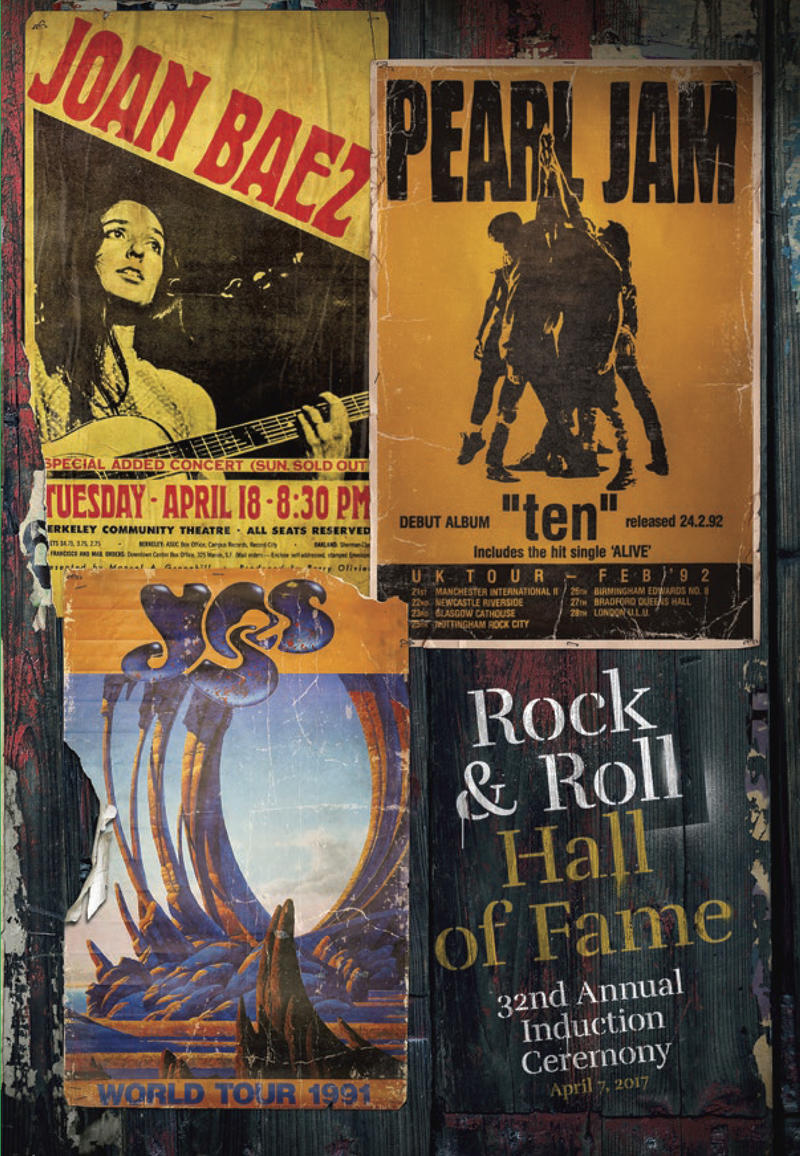
Back to All Inductees
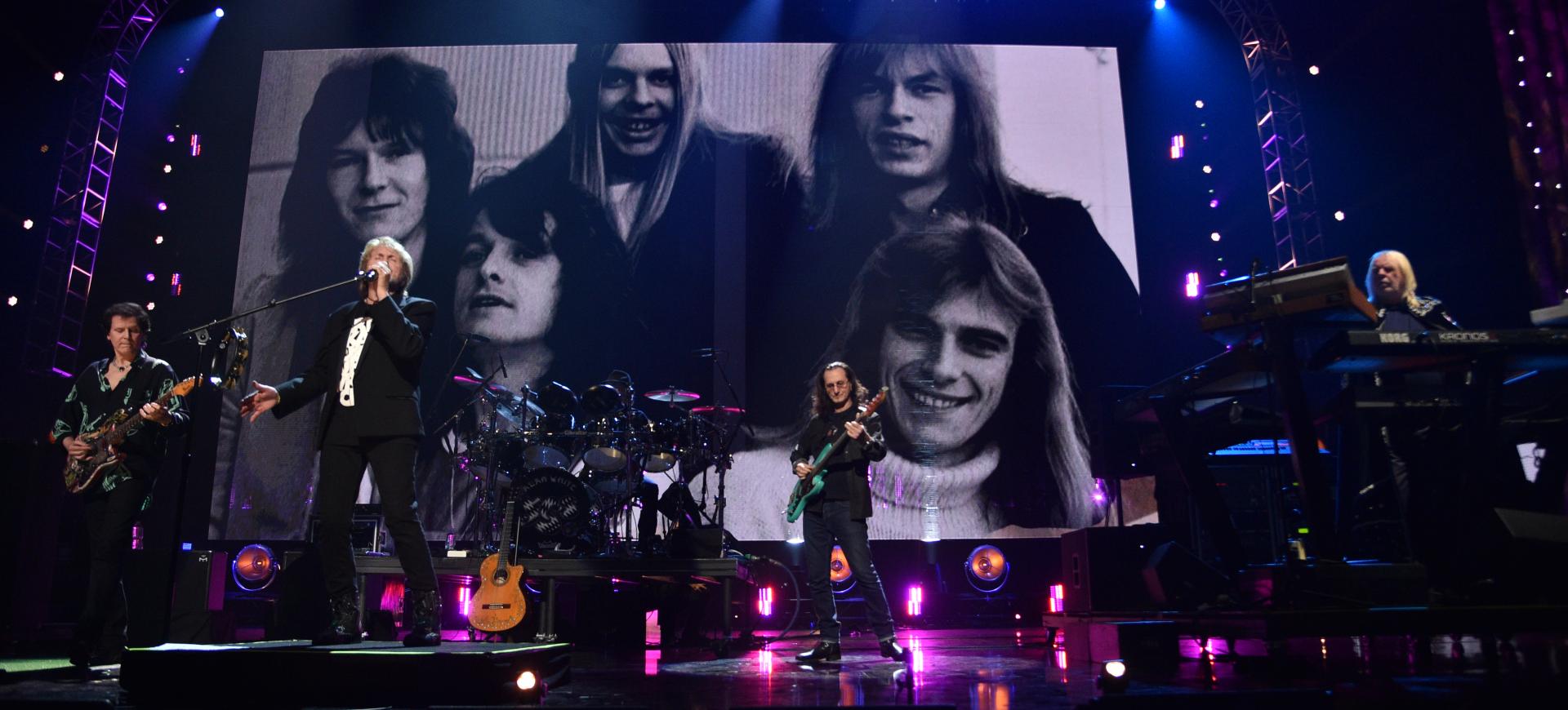
Tupac Shakur
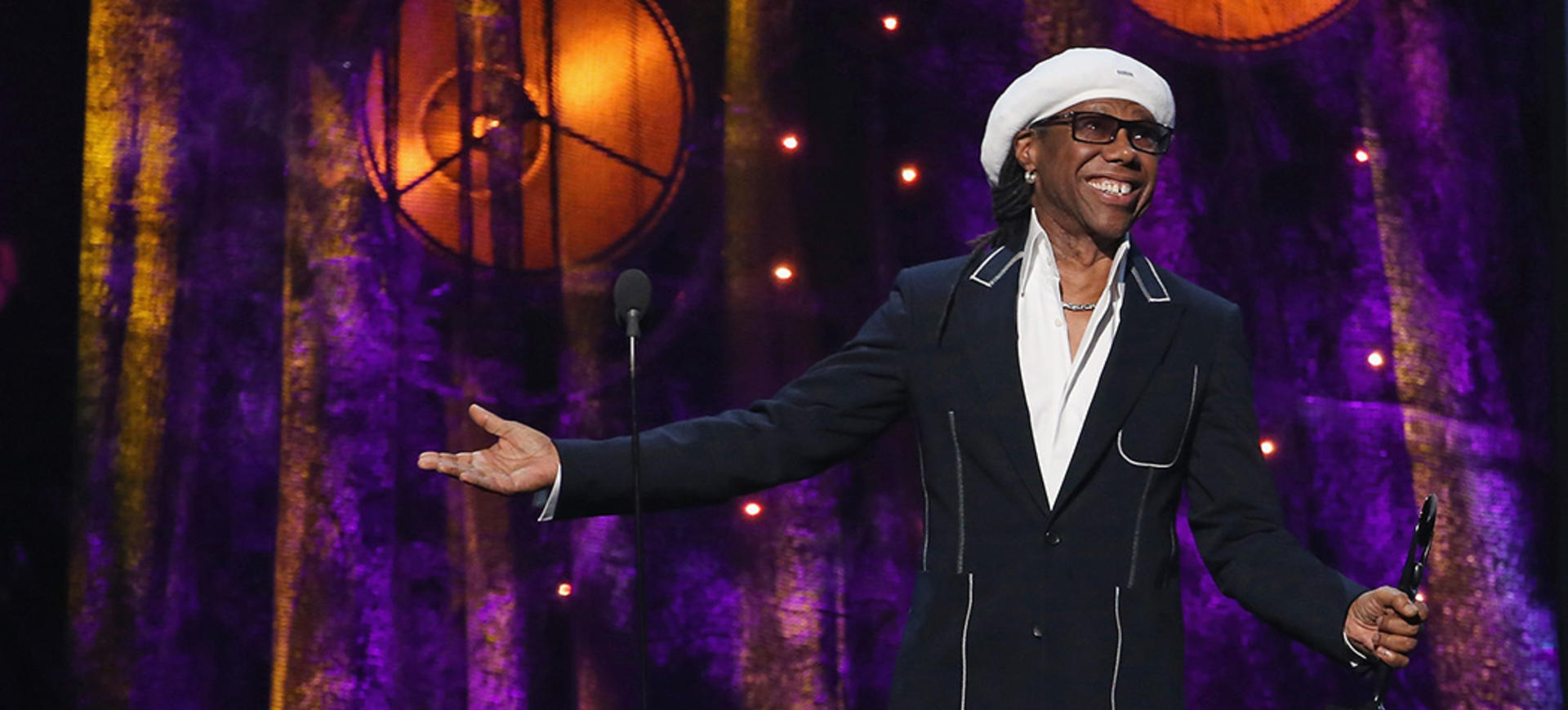
Nile Rodgers
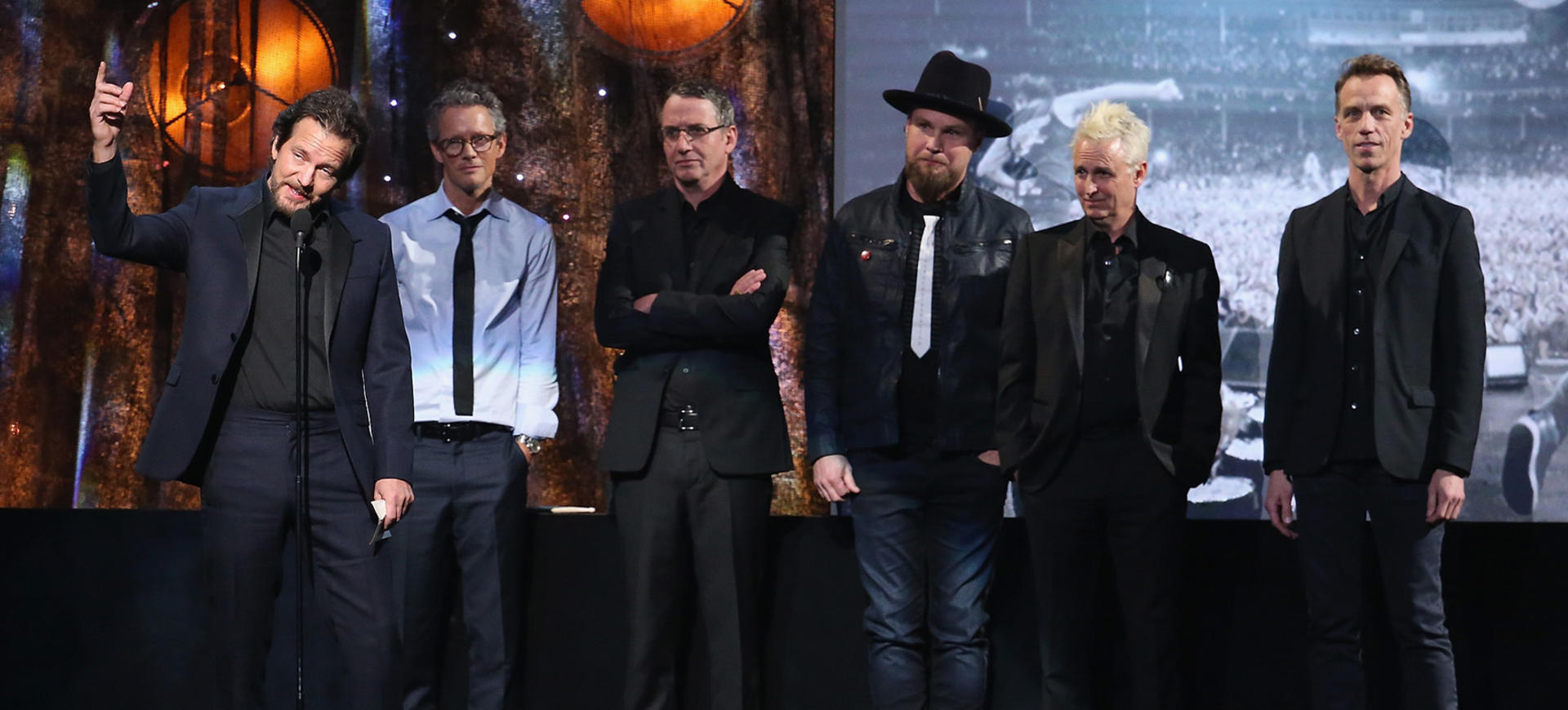
The 10 best Journey songs
Let's face it, AOR just wouldn't have been the same without them – here are Journey's ten best tracks
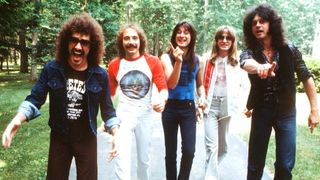
For many, Journey are the band who define AOR better than anyone else. Their catalogue glitters with unforgettable anthems, which not only contain massive choruses, but also the sort of musicianship you might expect from a band who began life as jazz rock instrumentalists before embracing the melodic rock style for which they’re renowned. We've gone through the band's back catalogue and hand-picked their 10 finest moments.
10. Girl Can’t Help It (1986)
After taking a break from the band to work on his solo album Street Talk , vocalist Steve Perry was persuaded to return to the fold for 1986's Raised On Radio album. While the production shows a clear-cut influence of the times, Perry’s vocals shine as brightly as ever, while Jonathan Cain’s smooth keyboards complement Neal Schon ’s edgy guitar stride.

9. Faithfully (1983)
This is the way Journey explained the problems of trying to carry on a relationship while out on the road touring. One of the stand-out tracks from 1983's Frontiers , Faithfully has a soft lilt that exposes an emptiness. However, this is augmented by the lush rhythm and the way that Steve Perry croons his way through without ever wallowing in over emotional hyperbole. A power ballad in the best Journey tradition.

8. Lovin, Touchin’, Squeezin’ (1979)
Anyone who thinks that Journey aren’t capable of anything other than slushy ballads really should check out Lovin, Touchin’, Squeezin’ from 1979's Evolution album. It has a funk groove, and while the tempo is very much of the balladic kind, Neal Schon stabs through with some electrifying moments. What’s more, Steve Perry’s vocals soar impressively to ensure maximum dramatic impact. One of the highlights on Evolution .

7. Lights (1978)
The opening song from 1978's Infinity record – the album that introduced Steve Perry to the world, and also put the band’s new-found melodic style on display for the very first time. It’s easy to tell why American radio fell in love with Journey at this point in time. The music is filled with commercial astuteness, the harmonies are sublime and the whole timbre of Lights is evocative and stylish. This oozes the sort of class that would become the norm for Journey in the coming years.

6. Who’s Cryin’ Now (1981)
Who’s Cryin’ Now begins with an unvarnished piano piece from Jonathan Cain, on which Steve Perry builds his rich tone. And Ross Vallory provides some tasteful bass lines, to underline the whole feel of the song. This is the type of track that accentuates Perry’s love for great soul singers, while it also showcases the way in which Journey stood apart from all the huge selling AOR masters, and why Escape is regarded as the classic Journey album.

- Inside AOR, the most under-appreciated sub-genre of all time
- The 40 Best AOR Vocalists Of All-Time: 10-1
- The Top 10 Essential 80s AOR Albums
5. Stone In Love (1981)
The fact this song opens up with shards of Neal Schon's guitar riffing proves that Journey were always prepared to give full weight to the heavier side of their talent. And Steve Perry also comes across with a lot more power than you might expect. This is a song where Journey never forget about the melody, but also give free rein to a rocky vibe. It also accentuates that Escape was always far more than just a collection of power ballads.
Classic Rock Newsletter
Sign up below to get the latest from Classic Rock, plus exclusive special offers, direct to your inbox!

4. Any Way You Want It (1980)
It may seem odd, but this song was actually inspired by Thin Lizzy , with whom Journey had toured a couple of years before recording the Departure album in 1980. But when you dig down and analyse the way in which the vocals are constructed, and the interchange between the instruments, then the influence becomes a lot clearer. There’s a gliding feel to the guitar parts that does feel like it is Thin Lizzy influenced, and Steve Perry adopts a storytelling style that is close to the Phil Lynott approach – and the whole feel suits Journey superbly.

3. Wheel In The Sky (1978)
Wheel In The Sky was co-written by Robert Fleischman, the band’s original choice of vocalist when they moved into a more commercial direction. However, when Fleischman didn’t work out and was replaced by Steve Perry, the song was thankfully retained. It starts with a flashing guitar groove, through which Perry cuts with a vibrant performance. In some ways, this is a basic live performance from the band, bringing a heavier dynamic to bear, but this fitted right into the whole feel of Infinity , and showed Journey could pound with the best.

2. Separate Ways (Worlds Apart) (1983)
After the enormous success of the Escape album, how did the band choose to open up their next album Frontiers ? With a powerhouse rocker than fitted right into an era where AOR was beginning to become a little less reliant on studio technology and celebrated talent. Of course, the rich production is evident here, but what makes the song work superbly is that way Jonathan Cain, Steve Perry and Neal Schon intertwine. There’s a buoyancy in Separate Ways (Worlds Apart) that tells of a band who are really playing off of each other’s strengths. The result is undeniably passionate.

1. Don’t Stop Believin’ (1981)
Is there anyone on the planet who does not know this song? It has got to be one of the most exposed tracks over the past two decades or so. And, because it’s so well known, it’s very easy to lose sight of just why this is so popular. Because Don’t Stop Believin’ is a peerless example of musical genius. Everything about it is simply perfect – the musicality, the vocals, the simple structure, the insistent melody… hell, this is not just Journey’s best song, it’s one of the truly landmark moments of the 80s.

Malcolm Dome had an illustrious and celebrated career which stretched back to working for Record Mirror magazine in the late 70s and Metal Fury in the early 80s before joining Kerrang! at its launch in 1981. His first book, Encyclopedia Metallica , published in 1981, may have been the inspiration for the name of a certain band formed that same year. Dome is also credited with inventing the term "thrash metal" while writing about the Anthrax song Metal Thrashing Mad in 1984. With the launch of Classic Rock magazine in 1998 he became involved with that title, sister magazine Metal Hammer, and was a contributor to Prog magazine since its inception in 2009. He died in 2021 .
"Dad's advice was always: follow your heart." A new Johnny Cash album of previously unreleased songs is coming later this year, powered by his son, John Carter Cash
New-look Asia announce Heat of The Moment US tour
"Join us as we destroy all enemies!" Megadeth announce US tour with Mudvayne and All That Remains
Most Popular
Complete List Of All Journey Current And Former Band Members

Feature Photo: Bruce Alan Bennett / Shutterstock.com
I first fell in love with the band Journey when I was in high school and brought the band’s album Infinity when it was first released. Their record company Columbia Records at the time heavily promoted the album. It was Steve Perry’s first recording with the band and Columbia knew they had a hit on their hands. I was blown away by Steve Perry’s voice and completely floored by how great the songs were on the record. Journey became one of the biggest bands of the seventies. They helped define the term “Stadium Rock.” The band has gone through multiple lineup changes over the years. This article takes a look at the revolving door of musicians who have come and gone as members of the band Journey .
The Orginal Journey Band Members
Neal Schon, born on February 27, 1954, in Tinker Air Force Base, Oklahoma, is an American musician best known as the lead guitarist for Journey. He was one of the founding members of the band in 1973. Over the years, Schon played a significant role in shaping the band’s sound and has appeared on every Journey album to date, from their self-titled debut album “Journey” (1975) to their most recent releases. He primarily plays the electric guitar but has been known to play acoustic guitar and perform backing vocals as well. Schon co-wrote some of the band’s most iconic songs like “Don’t Stop Believin’,” “Wheel in the Sky,” and “Any Way You Want It.” Besides his work with Journey, Neal Schon has had a rich solo career and has also been a part of other bands like Santana and Bad English .
Ross Valory
Ross Valory, born on February 2, 1949, in San Francisco, California, is an American musician renowned for being Journey’s original bass guitarist. He joined the band at its inception in 1973 and contributed to albums like “Journey” (1975), “Infinity” (1978), “Escape” (1981), and many more. Valory played both the bass guitar and occasionally provided backing vocals. He was a part of Journey until he was fired from the band in 2020. Apart from Journey, Valory was involved in the Steve Miller Band and also had a side project called “The Vu.”
Gregg Rolie
Gregg Rolie was born on June 17, 1947, in Seattle, Washington, and is an American keyboardist and singer. He was a founding member of Journey and joined the band in 1973. Rolie played keyboards and was the lead vocalist on the band’s first three albums: “Journey” (1975), “Look into the Future” (1976), and “Next” (1977). He left Journey in 1980 to pursue other musical endeavors. Notably, he was a member of Santana before joining Journey and co-wrote and sang lead vocals on classics like “Black Magic Woman” and “Evil Ways.” After leaving Journey, he went on to form The Gregg Rolie Band and also joined Ringo Starr & His All-Starr Band .
George Tickner
George Tickner, born on September 8, 1946, in Syracuse, New York, is an American musician who played rhythm guitar for Journey. He was among the original members when the band was founded in 1973 but left shortly after the release of the band’s self-titled debut album in 1975. Tickner contributed to the writing of some early songs but didn’t stay with the band long enough to participate in the more commercial phases of Journey’s career. After leaving Journey, Tickner largely retired from professional music to pursue a career in medicine.
Charles “Prairie” Prince
Charles “Prairie” Prince, born on May 7, 1950, in Charlotte, North Carolina, was the original drummer for Journey when the band was formed in 1973. However, he never officially recorded with the band and left before their debut album was made. He is best known for his work with The Tubes , a San Francisco-based rock band. Though his time with Journey was short-lived, Prince has had a significant career in music, working with artists like Todd Rundgren, and Jefferson Starship, and as a session musician for various other artists.
The Next Phase and Beyond
Aynsley dunbar.
Aynsley Dunbar, born on January 10, 1946, in Liverpool, England, is a British drummer known for his work with various rock and blues bands. He joined Journey in 1974, shortly after the band’s formation, and played on the albums “Journey” (1975), “Look into the Future” (1976), and “Next” (1977). Dunbar’s jazz-influenced drumming style added a unique element to Journey’s early sound. He left the band in 1978 before the band shifted to a more mainstream, commercial sound. Apart from Journey, Dunbar has had an extensive career, playing with artists like Frank Zappa, David Bowie, and Whitesnake.
Robert Fleischman
Robert Fleischman, born on March 11, 1953, in Los Angeles, California, is an American musician who briefly served as Journey’s lead vocalist in 1977. Though he never appeared on any studio albums with Journey, he contributed to songwriting and is credited with co-writing songs like “Wheel in the Sky.” Fleischman was replaced by Steve Perry later in the same year he joined. Outside of Journey, Fleischman had a solo career and was a member of other rock bands like Vinnie Vincent Invasion.
Steve Perry
Steve Perry , born on January 22, 1949, in Hanford, California, is an American singer known for his soaring vocals. He joined Journey in 1977 and quickly became the band’s iconic lead vocalist. Steve Perry played a significant role in Journey’s commercial success and was a key contributor to albums like “Infinity” (1978), “Evolution” (1979), “Escape” (1981), among others. He co-wrote and sang some of Journey’s most famous songs, including “Don’t Stop Believin'” and “Open Arms.” Perry left the band in 1998 due to health issues and to pursue a solo career, which itself has been highly successful, featuring hits like “Oh Sherrie.”
Steve Smith
Steve Smith, born on August 21, 1954, in Whitman, Massachusetts, is an American drummer. He joined Journey in 1978, replacing Aynsley Dunbar, and played on some of their most successful albums like “Evolution,” “Escape,” and “Frontiers.” Known for his technical skill, Smith left the band in 1985 but returned for various stints, the latest being from 2015 to 2020. Outside of Journey, Smith has had a rich career in jazz and has been part of his own jazz fusion band, Vital Information.
Randy Jackson
Randy Jackson, born on June 23, 1956, in Baton Rouge, Louisiana, is an American musician, best known as a judge on the television show “American Idol.” He joined Journey as a bass player for a short stint during the mid-1980s and played on the 1986 album “Raised on Radio.” Jackson was part of the band’s transition towards a more pop-oriented sound during that period. Besides Journey, he has been an in-demand session musician and has produced and performed with a wide array of artists across genres.
Steve Augeri
Steve Augeri, born on January 30, 1959, in Brooklyn, New York, is an American rock singer best known for his work as the lead vocalist for Journey from 1998 to 2006. He was brought in as a replacement for Steve Perry and featured on albums like “Arrival” (2001) and “Generations” (2005). Augeri co-wrote songs for the band but had to leave in 2006 due to vocal issues. Outside of Journey, he has been involved in other bands like Tyketto and has also embarked on a solo career.
Jeff Scott Soto
Jeff Scott Soto, born on November 4, 1965, in Brooklyn, New York, is an American singer who served as Journey’s lead vocalist for a brief period from 2006 to 2007. He stepped in following Steve Augeri’s departure due to vocal issues but was in the band for less than a year. Though his time with Journey was short-lived, he did perform live with the band during that period. Outside of Journey, Soto has a prolific career, having been a part of bands like Yngwie Malmsteen’s Rising Force and Talisman, as well as a successful solo career.
Deen Castronovo
Deen Castronovo, born on August 17, 1964, in Westminster, California, is an American drummer and vocalist. He joined Journey in 1998, replacing Steve Smith, and contributed to albums like “Arrival” (2001), “Generations” (2005), and “Eclipse” (2011). Besides playing drums, Castronovo also performed backing and some lead vocals during his time with the band. He left Journey in 2015 amidst personal issues. Beyond Journey, he has played with bands like Bad English and Hardline and is known for his work in various other musical projects.
Narada Michael Walden
Narada Michael Walden, born on April 23, 1952, in Kalamazoo, Michigan, is an American musician, producer, and songwriter. He joined Journey as a drummer in 2020, replacing Steve Smith. Known for his diverse skill set across genres, Walden has a rich career outside of his time with Journey. He’s a multi-Grammy Award-winning producer and has worked with a myriad of artists including Whitney Houston, Mariah Carey, and Aretha Franklin.
Arnel Pineda
Arnel Pineda, born on September 5, 1967, in Sampaloc, Manila, Philippines, is a Filipino singer and songwriter. He became the lead vocalist for Journey in 2007, discovered by Neal Schon through YouTube videos of Pineda covering Journey songs. He made his studio debut with the band on the 2008 album “Revelation” and has remained with the band since. Outside of Journey, Pineda had been a part of several bands in the Philippines and has a solo career as well.
Jason Derlatka
Jason Derlatka, born on September 8, 1972, in Pittsburgh, Pennsylvania, is an American keyboardist, vocalist, and composer. He joined Journey in 2020 as a touring keyboardist and background vocalist. Though he hasn’t been featured on any studio albums with the band yet, he brings a wide range of musical experience to Journey. Derlatka has worked extensively in television, composing music for series like “House” and “Parenthood.”
Todd Jensen
Todd Jensen, born on October 19, 1965, in Portland, Oregon, is an American bassist. Though he never officially recorded with Journey, Jensen was involved as a touring member following Ross Valory’s departure in 2020. Known for his versatility, he has played with various artists and bands spanning multiple genres, including David Lee Roth, Ozzy Osbourne, and Alice Cooper.
Complete List Of All Journey Current And Former Band Members article published on Classic RockHistory.com© 2023
Classicrockhistory.com claims ownership of all its original content and Intellectual property under United States Copyright laws and those of all other foreign countries. No one person, business, or organization is allowed to re-publish any of our original content anywhere on the web or in print without our permission. All photos used are either public domain Creative Commons photos or licensed officially from Shutterstock under license with ClassicRockHistory.com. All photo credits have been placed at the end of the article. Album Cover Photos are affiliate links and the property of Amazon and are stored on the Amazon server. Any theft of our content will be met with swift legal action against the infringing websites.

DON’T MISS A BEAT
Be the first to know when a new article is published
We don’t spam! Read our privacy policy for more info.

Check your inbox or spam folder to confirm your subscription.
Related Posts

10 Jazz Fusion Guitarists That Rock

Complete List Of The Who Band Members

10 Guitarists Who Departed Before Their Bands Became Famous

Complete List Of Soundgarden Band Members


10 Drummers Whose Sound And Groove Became Legendary

Complete List Of Eagles Current And Former Band Members
About the author.
Brian Kachejian
Brian Kachejian was born in Manhattan and raised in the Bronx. He is the founder and Editor in Chief of ClassicRockHistory.com. He has spent thirty years in the music business often working with many of the people who have appeared on this site. Brian Kachejian also holds B.A. and M.A. degrees from Stony Brook University along with New York State Public School Education Certifications in Music and Social Studies. Brian Kachejian is also an active member of the New York Press.
Add Comment Cancel Reply
Yes, add me to your mailing list
This site uses Akismet to reduce spam. Learn how your comment data is processed .

- Manage Account
Journey’s 10 Best Songs
Sure, "Don't Stop Believin'" -- but there's a whole lot more.
By Gary Graff
- Share this article on Facebook
- Share this article on Twitter
- Share this article on Flipboard
- Share this article on Pinit
- + additional share options added
- Share this article on Tumblr
- Share this article on Reddit
- Share this article on Linkedin
- Share this article on Whatsapp
- Share this article on Email
- Print this article
- Share this article on Comment

Though it arrives amidst lawsuits , social media sniping and infighting, Journey is turning 50 this year.
During that half century, the group has sold more than 100 million records worldwide, logging 11 platinum-or-better albums (including Diamond certifications for 1981’s Escape and 1988’s Greatest Hits) , earning eight top 10 albums on the Billboard 200 and 25 hits on the Billboard Hot 100. It’s also been a reliable ticket-selling act for most of its career, and in 2017, the band was inducted into the Rock and Roll Hall of Fame.
Journey’s is the story of eras. When the group originally formed in San Francisco in 1973, original manager Herbie Herbert helped bring together guitarist Neal Schon and keyboard player/vocalist Gregg Rolie from Santana, bassist Ross Valory and rhythm guitarist George Tickner from Frumious Bandersnatch and drummer Prairie Prince from The Tubes. Prince would be replaced by David Bowie/Frank Zappa skins man Aynsley Dunbar, while Tickner would leave after Journey’s self-titled first album in 1975. The remaining quartet recorded two more albums before Steve Perry came on board for 1978’s Infinity, which began the band’s run of multi-platinum smashes — also marking the first appearance of Alton Kelley and Stanley Mouse’s iconic scarab logo for the band. Dunbar was replaced by Steve Smith for 1979’s Evolution , and Rolie would leave in 1980 with Jonathan Cain of The Babys joining to help elevate the band to even greater fortunes on Escape and Frontiers .
The palette has been diverse, but there are common elements among Journey’s best songs — sturdy melodies and sing-along choruses, usually leading into one of Schon’s majestic guitar solos. But within that mold there’s also been plenty of invention and clever arrangements that have never been as formulaic as some of the band’s detractors (particularly during their early ‘80s heyday) would have you believe.
Journey has gone through its fair share of lineups, with singer Arnel Pineda on board since 2007 — the longest continuous tenure of any Journey frontman. The group released Freedom , it’s first new studio album in 11 years, in 2022, and despite the current legal fractures (which you can read about in detail here ), still they ride, as the Escape track says — and may they keep on runnin’ for a long time.
With all that in mind, here are our picks for Journey’s 10 best songs — not all of which come from the biggest hits.
"Someday Soon" ( Departure , 1980)
This album track from Rolie’s finally studio effort with the band is a hypnotic tone poem, with a ringing, cushy ambience and a hippie kind of optimism – not to mention the best give-and-take Perry and Rolie achieved during their time together in the band. It’s of course been eclipsed by Journey’s myriad hits (“Any Way You Want It” is the enduring top 40 Hot 100 hit from Departure ), but it’s a gem worthy of discovery. Listen here.
"Escape" ( Escape , 1981)
The title track from Journey’s Billboard 200-topping studio album straddled the hard rock/pomp attack of the group’s mid-‘70s output with the melodic sensibility of the Perry-Cain axis. Its five-minute length provides room for the arrangement to stretch out and flow from one song part to the next, with a crunch that was part of Journey’s palette at the time. Listen here.
"Of a Lifetime" ( Journey , 1975)
The Journey of 1973-77 was certainly a different creature than the hitmaking colossus so many know and love. The group’s initial lineups flexed instrumental muscles, smoothly knitting together a number of styles more interested in the journey (ba- dum ) than any commercial destination. The first track from its first album is a prototype, leaning into blues, psychedelic rock and a touch of Latin, with the first of what would become many standout Schon solos, and a tuneful sturdiness delivered by Rolie’s soulful vocal. Listen here.
"Faithfully" (Frontiers , 1983)

The melody of this top 20 Hot 100 hit came to Cain in a dream on a tour bus, and his paean to the struggle between home and the road was written in a half-hour. The result was a swoon-inducing ballad tailor-made for a sea of lighters (back then) and cellphone flashlights (now), capturing one of Perry’s best recorded performances and one of Schon’s most inspired solos. One of its great side stories is that Prince contacted Cain after he wrote “Purple Rain,” concerned that it might be too similar to “Faithfully.” Cain determined it wasn’t, but joked to Billboard that, “After seeing what it became, I should have asked for a couple of points….”
"Ask the Lonely" (single, 1983)
Recorded for Frontiers , this one wound up in the romcom Two of a Kind (starring the Grease duo of John Travolta and Olivia Newton-John) and rocked its way to No. 3 on the Mainstream Rock Airplay chart. Like “Only the Young,” which wound up in Vision Quest two years later, it showed that Journey was on roll – and well-suited for big soundtrack moments. Listen here.
"Who's Crying Now" ( Escape, 1981)
The best of Journey’s swoon songs — started by Perry while driving into Los Angeles and finished with Cain — has a subtlety and dynamic build that sets it apart from the many others of its ilk they’d create. The verse slips into the chorus with a soulful ease, and Schon’s guitar accents deftly build up to his searing solo at the end. The Escape single reached No. 4 on the Hot 100. Listen here.
"Feeling That Way" ( Infinity , 1978)
If fans at the time wondered how Steve Perry and Gregg Rolie would co-exist, this was the answer — an ebb-and-flow tradeoff that proved they could complement each other as lead singers as well as harmonize smoothly together (first evidenced by Infinity ‘s lead track “Lights”). Its medley-like pairing with the next track, “Anytime,” was gravy that would become a motif on the next few Journey albums. Listen here.
"Just the Same Way" ( Evolution , 1979)
Journey’s fifth album had a punchier sound than Infinity — though they shared producer Roy Thomas Baker — which worked to the benefit of the album’s first single. Led by Rolie’s piano and muscular lead vocal, with Perry responding on the choruses and bridge, it reached No. 58 on the Hot 100 in 1979. In a perfect world this would have been as big as anything from Escape or Frontiers, but it’s still a convincing introduction to the Rolie era of the band. Listen here.
"Don't Stop Believin'" ( Escape , 1981)

More than a billion Spotify streams, a Library of Congress National Recording Registry placement and plays at virtually every sporting event around the world don’t lie — this one is Journey’s pinnacle of success. Created during a rehearsal at the group’s warehouse HQ in Oakland, Calif., it gave us the “streetlight people” of Hollywood’s Sunset Strip and put the non-existent South Detroit on the map. And it saves the chorus for the song’s end, after the guitar solo. A cross-generational hit? Believe it, gleefully.
"Stone in Love" ( Escape , 1981)
Schon reportedly called this “Stoned in Love” when he wrote the riff, and it’s certainly an addictive track that’s the best roll-down-the-windows-and-crank-it-up Journey fix you could ask for — not to mention a frequent show opener. A No. 13 Mainstream Rock Airplay hit in 1981, the song is practically a deep cut today. But its anthemic chorus is a spirit-lifter and the dynamic breakdown that segues into the song-closing guitar solo harks back to the ambitious musicality of the first few albums. “Stone” is a gem that still shines bright. Listen here.
Get weekly rundowns straight to your inbox
Want to know what everyone in the music business is talking about?
Get in the know on.
Billboard is a part of Penske Media Corporation. © 2024 Billboard Media, LLC. All Rights Reserved.
optional screen reader
Charts expand charts menu.
- Billboard Hot 100™
- Billboard 200™
- Hits Of The World™
- TikTok Billboard Top 50
- Song Breaker
- Year-End Charts
- Decade-End Charts
Music Expand music menu
- R&B/Hip-Hop
Culture Expand culture menu
Media expand media menu, business expand business menu.
- Business News
- Record Labels
- View All Pro
Pro Tools Expand pro-tools menu
- Songwriters & Producers
- Artist Index
- Royalty Calculator
- Market Watch
- Industry Events Calendar
Billboard Español Expand billboard-espanol menu
- Cultura y Entretenimiento
Honda Music Expand honda-music menu
- Privacy Policy
- Sample Page
The Reading Order
Feel the Need … the need to READ !
The List of Journey Albums in Order of Release Date

Sold over 80 million albums worldwide, including 48 million albums in the United States, Journey is one of the greatest rock and roll band of all time released 15 studio albums, five live albums, 11 compilation albums, and 51 singles since 1975.
Formed in San Francisco in 1973 by former members of Santana, Steve Miller Band, and Frumious Bandersnatch. Journey had their biggest commercial success between 1978 and 1987, when Steve Perry was lead vocalist; they released a series of hit songs, including “Don’t Stop Believin'” (1981). The epitome of all that is big, bold, and exhilarating about arena rock of the ‘70s and ‘80s, Journey’s “Don’t Stop Believin’” feels both iconic and indestructible. Journey had even more flash when they formed in 1973 as a jazz-rock showcase for ex-Santana guitarist Neal Schon and other musicians from Bay Area bands. Between “Lovin’, Touchin’, Squeezin’” in 1977 and their commercial peak with Escape and 1983’s Frontiers, Journey seemed unbeatable, thanks to Perry’s precise vocals and Schon’s guitar heroics. Journey enjoyed a successful reunion in the mid-1990s and have since regrouped twice; first with Steve Augeri from 1998 to 2006, then with Arnel Pineda from 2007 to the present. Originally a progressive rock band, Journey was described by AllMusic as having cemented a reputation as “one of America’s most beloved (and sometimes hated) commercial rock/pop bands” by 1978, when they redefined their sound by embracing pop arrangements on their fourth album, Infinity. The band currently consists of guitarist/vocalist Neal Schon (the only constant original member), keyboardists/vocalists Jonathan Cain and Jason Derlatka, drummer/vocalist Deen Castronovo, and lead vocalist Arnel Pineda. So, if you are a die heart fan of Journey Albums then check out here we have list of Journey albums in order of release so far.
Journey Albums Available on: Apple Music
All Journey Studio Albums in Order of Release Date
1. journey (1975).
Journey’s self-titled album, released in 1975, marked the band’s debut in the music scene. This iconic record showcased the band’s early sound, blending elements of progressive rock and jazz fusion with a touch of hard rock. The album features a collection of ten tracks that beautifully exhibit the musicianship and songwriting prowess of the band members.
From the energetic and catchy “Of a Lifetime” to the intricate and melodic “Kohoutek,” Journey’s self-titled album takes listeners on a captivating musical journey. The standout tracks include the emotionally charged ballad “Lights” and the epic closer “To Play Some Music,” which showcases the band’s instrumental virtuosity.
With powerful vocals by Gregg Rolie, mesmerizing guitar work by Neal Schon, and solid rhythm section contributions from Ross Valory and Aynsley Dunbar, Journey’s debut album laid the foundation for their subsequent success. It’s a remarkable album that captures the essence of the band’s early sound and sets the stage for their evolution into one of the most influential rock bands of the late 1970s and 1980s.
2. Look into the Future (1976)
“Look into the Future” is the sophomore studio album released by the American rock band Journey in 1976. With this album, Journey further solidified their sound, showcasing their evolving musical prowess and innovative songwriting.
The album features a dynamic blend of progressive rock and hard rock elements, creating a distinctive sonic landscape. “Look into the Future” encompasses intricate guitar work by Neal Schon, soulful vocals by Gregg Rolie, and the powerful rhythm section of Ross Valory on bass and Aynsley Dunbar on drums.
The tracks on the album exhibit a range of emotions, from the introspective and atmospheric title track “Look into the Future” to the energetic and riff-driven “On a Saturday Nite.” Other standout songs include the hauntingly melodic “Midnight Dreamer” and the epic and ambitious “I’m Gonna Leave You.”
“Look into the Future” showcases Journey’s artistic growth and sets the foundation for their subsequent successes. It remains a testament to the band’s musical vision and serves as a vital chapter in their discography, capturing the essence of their early years and foreshadowing their future triumphs in the world of rock music.
3. Next (1977)
“Next” is the seventh studio album released by the American rock band Journey in 1977. This album marked a transitional period for the band as they shifted towards a more progressive and jazz-influenced sound. The album features a blend of melodic rock tracks and instrumental pieces, showcasing the band’s musical versatility and technical prowess. Songs like “Spaceman” and “Nickel and Dime” highlight the band’s signature catchy hooks and harmonies, while tracks like “Karma” and “I Would Find You” delve into more complex musical arrangements and exploratory solos. “Next” showcases the evolving songwriting skills of the band’s members, particularly guitarist Neal Schon and keyboardist Gregg Rolie. With its diverse range of musical styles and solid performances, “Next” laid the groundwork for the band’s subsequent success in the 1980s.
4. Infinity (1978)
Journey’s album “Infinity,” released in 1978, marks a pivotal point in the band’s career. This record showcased a shift in their musical style, transitioning from a progressive rock sound to a more accessible and radio-friendly approach. “Infinity” introduced Steve Perry as the new lead vocalist, adding a dynamic and powerful element to the band’s sound.
The album features some of Journey’s most iconic tracks, including the chart-topping hit “Wheel in the Sky” and the anthemic “Lights.” “Infinity” captures the essence of late ’70s rock, blending melodic hooks, catchy guitar riffs, and soaring vocal harmonies. The album’s production is polished, highlighting each instrument’s contribution and emphasizing the band’s tight musicianship.
With “Infinity,” Journey began their journey (pun intended) toward becoming one of the most successful rock bands of the ’80s. This album laid the foundation for their future releases and set the stage for their signature sound, characterized by Perry’s distinct vocals and the band’s ability to craft unforgettable melodic rock songs.
5. Evolution (1979)
Evolution, released in 1979, marks a significant milestone in the musical journey of the iconic American rock band, Journey. This album showcases the band’s evolving sound, blending elements of hard rock, progressive rock, and pop sensibilities into a cohesive musical experience. Evolution captures Journey’s transition from their earlier progressive rock sound to a more radio-friendly style that would define their subsequent success.
The album’s standout tracks, such as “Lovin’, Touchin’, Squeezin'” and “Just the Same Way,” demonstrate the band’s ability to craft infectious melodies and memorable hooks while maintaining their signature guitar-driven sound. With Evolution, Journey strikes a perfect balance between melodic rock anthems and introspective ballads like “Patiently” and “Don’t Stop Believin’,” which would become an enduring rock classic.
This album showcases the band’s musical prowess and the distinct vocal talents of Steve Perry, establishing Journey as a force to be reckoned with in the rock music landscape. Evolution acts as a stepping stone, paving the way for the band’s monumental success in the following decade, making it an essential chapter in their musical evolution.
6. Departure (1980)
Journey’s album “Departure,” released in 1980, marked a significant turning point in the band’s sound and showcased their evolving musicality. This album captured Journey’s transition from their progressive rock roots towards a more accessible, melodic rock sound that would later define their success. The album features the powerful and dynamic vocals of Steve Perry, complemented by Neal Schon’s mesmerizing guitar solos and the tight rhythm section of Ross Valory on bass and Steve Smith on drums. Standout tracks such as “Any Way You Want It” and “Where Were You” exemplify the band’s ability to craft catchy hooks and anthemic choruses. With its polished production and infectious energy, “Departure” solidified Journey’s place in the mainstream rock scene and set the stage for their subsequent commercial triumphs in the 1980s.
7. Dream, After Dream (1980)
“Dream, After Dream” is a captivating musical journey released by the progressive rock band Journey in 1980. Serving as the soundtrack for the Japanese film of the same name, this album showcases the band’s versatility and artistry. With its atmospheric soundscapes and intricate compositions, “Dream, After Dream” takes listeners on a mesmerizing adventure through various musical landscapes.
The album features a fusion of progressive rock elements and melodic hooks, highlighted by Neal Schon’s masterful guitar work and Gregg Rolie’s soulful keyboards. Songs like “Destiny” and “Sandcastles” exude a sense of ethereal beauty, while tracks like “Little Girl” and “Silent Dream” exhibit the band’s ability to create poignant and emotive ballads.
“Dream, After Dream” is a testament to Journey’s ability to push boundaries and experiment with their sound, all while maintaining their signature blend of rock and melodic sensibilities. It stands as a hidden gem in the band’s discography, showcasing their musical prowess and creativity beyond their more well-known hits.
8. Escape (1981)
Journey’s “Escape,” released in 1981, is a quintessential rock album that captivated audiences with its energetic and melodic sound. The band’s seventh studio album marked a significant turning point in their career, propelling them to the height of their popularity. Packed with anthemic hits and memorable hooks, “Escape” showcases Journey’s mastery of catchy rock tunes. The album features timeless tracks like “Don’t Stop Believin’,” a stadium rock anthem that continues to resonate with listeners to this day. Other standout songs include the power ballad “Open Arms” and the driving rockers “Stone in Love” and “Who’s Crying Now.” With its polished production and strong songwriting, “Escape” solidified Journey’s status as one of the most influential bands of the era and remains a cherished album among rock enthusiasts.
9. Frontiers (1983)
Frontiers is the eighth studio album by the American rock band Journey, released in 1983. It marked a significant shift in the band’s sound, embracing a more polished and commercial approach. The album showcases Journey’s signature blend of melodic rock and arena-ready anthems, with a touch of pop sensibility. Frontiers features a collection of memorable tracks, including the chart-topping power ballad “Faithfully” and the energetic rockers “Separate Ways (Worlds Apart)” and “Stone in Love.” The album’s production is slick and polished, with the band’s trademark guitar work, soaring vocals, and keyboard-driven hooks taking center stage. Frontiers solidified Journey’s status as one of the premier rock bands of the ’80s, capturing the spirit of the era while delivering memorable and catchy songs that have stood the test of time.
10. Raised on Radio (1986)
“Raised on Radio” is the ninth studio album by the American rock band Journey, released in 1986. The album marked a significant transition for the band, as it was their first release without their original lead vocalist Steve Perry. Instead, keyboardist Jonathan Cain and guitarist Neal Schon took over the majority of the lead vocal duties.
“Raised on Radio” showcased a more radio-friendly sound, incorporating elements of pop and AOR (album-oriented rock). The album spawned several hit singles, including “Be Good to Yourself,” “I’ll Be Alright Without You,” and “Girl Can’t Help It,” which all received substantial airplay on rock and pop radio stations.
Despite the changes in lineup and musical direction, Journey maintained their signature melodic rock sound on “Raised on Radio.” The album features strong hooks, soaring guitar solos, and Cain’s prominent keyboard work. While it received mixed reviews upon its release, “Raised on Radio” remains a memorable chapter in Journey’s discography, showcasing their ability to adapt to the evolving music scene of the 1980s.
11. Trial by Fire (1996)
“Trial by Fire” is the ninth studio album by the American rock band Journey, released in 1996. It marked the band’s first studio release in ten years, following a lengthy hiatus. This album was highly anticipated by fans, as it saw the return of lead vocalist Steve Perry after his departure from the band.
“Trial by Fire” showcases Journey’s signature melodic rock sound, blending powerful guitar riffs with Perry’s soaring vocals. The album features a mix of anthemic rockers and heartfelt ballads, capturing the band’s ability to create both energetic and emotionally resonant music.
Notable tracks from the album include the chart-topping ballad “When You Love a Woman” and the uplifting rock anthem “Message of Love.” With its polished production and memorable hooks, “Trial by Fire” reaffirmed Journey’s status as one of the premier rock bands of the era.
Overall, “Trial by Fire” stands as a triumphant comeback for Journey, showcasing their enduring talent and ability to create captivating rock music that resonates with audiences.
12. Arrival (2001)
Arrival, released in 2001, is an extraordinary album by the Swedish rock band Journey. It marked a significant comeback for the group after a lengthy hiatus, showcasing their timeless sound and remarkable musicality. The album seamlessly blends melodic rock with elements of AOR and progressive rock, creating a captivating and immersive experience for listeners. Each track on Arrival is a testament to Journey’s exceptional musicianship, with soaring guitar solos, intricate keyboard arrangements, and the iconic vocals of lead singer Steve Perry. From the anthemic opener “Higher Place” to the heartfelt balladry of “All the Way,” Arrival demonstrates the band’s ability to craft memorable hooks and emotionally resonant lyrics. It is a triumphant return that solidified Journey’s status as one of the greatest rock bands of all time and continues to captivate fans around the world.
13. Generations (2005)
Journey’s album “Generations,” released in 2005, marked a significant milestone in the band’s discography. This album showcased the seamless transition from the iconic Steve Perry era to the talented vocalist Jeff Scott Soto. “Generations” is an exceptional blend of classic rock and contemporary elements that captures the essence of Journey’s timeless sound.
The album boasts powerful anthems like “Faith in the Heartland” and “The Place in Your Heart,” which are reminiscent of the band’s signature melodic rock style. Tracks like “Never Too Late” and “Where Did I Lose Your Love” showcase the band’s ability to craft emotionally charged ballads that tug at the heartstrings.
With “Generations,” Journey managed to bridge the gap between their rich musical heritage and a fresh, revitalized sound. The album is a testament to the band’s resilience and enduring musical prowess, solidifying their status as one of the most influential rock acts of all time.
14. Revelation (2008)
Revelation is the eleventh studio album by the legendary rock band Journey, released in 2008. The album marked a significant moment in the band’s discography as it was their first release with lead vocalist Arnel Pineda, who joined the group in 2007.
Revelation showcases Journey’s signature sound of melodic rock fused with soaring guitar solos and powerful vocals. The album features a mix of new original tracks as well as re-recorded versions of some of their classic hits, including “Don’t Stop Believin'” and “Wheel in the Sky.” Pineda’s vocal range and energy bring a fresh dynamic to the band’s music, breathing new life into their beloved songs.
With its well-crafted compositions and memorable hooks, Revelation captures the essence of Journey’s timeless appeal while also embracing a contemporary sound. The album received critical acclaim and resonated with both longtime fans and new listeners, solidifying Journey’s enduring legacy as one of rock music’s most influential acts.
15. Eclipse (2011)
Eclipse, released in 2011, is a captivating musical journey that showcases the immense talent and versatility of the Swedish rock band, Journey. With this album, Journey takes listeners on a sonic adventure filled with powerful anthems and heartfelt ballads. The album is a seamless blend of melodic rock, pulsating rhythms, and captivating guitar solos.
Eclipse introduces a new chapter in the band’s musical evolution, as they explore deeper and darker themes while staying true to their signature sound. The lyrics touch upon introspective topics such as personal struggles, love, and self-discovery. The album’s production is polished and refined, highlighting the band’s impeccable musicianship and Steve Perry’s iconic vocals.
Eclipse boasts a collection of standout tracks, including the adrenaline-fueled “City of Hope,” the hauntingly beautiful “Human Feel,” and the epic anthem “Edge of the Moment.” Each song carries a distinct energy, showcasing the band’s ability to craft memorable melodies and deliver them with passion and precision.
Overall, Eclipse is a testament to Journey’s enduring legacy as one of the greatest rock bands of all time. It’s a remarkable album that resonates with fans, old and new, and solidifies the band’s ability to create timeless music that transcends generations.
16. Freedom (2022)
“Freedom” is a captivating musical journey that emerged from the depths of 2022. This album, created by an enigmatic artist, unveils a unique blend of introspection and liberation, entwined with captivating melodies and thought-provoking lyrics. The tracks oscillate between moments of vulnerability and empowering resilience, inviting listeners to embark on an emotional expedition.
Each song in “Freedom” carries its distinct essence, painting a vivid picture of the artist’s evolution and growth. From the opening notes, the album takes hold of your senses, transporting you to a realm where constraints dissolve, and limitless possibilities abound. The lyrics explore themes of self-discovery, breaking free from societal expectations, and embracing personal truths.
Throughout this musical odyssey, the artist’s dynamic vocals and masterful instrumentation serve as guides, leading the listener through peaks of exhilaration and valleys of introspection. “Freedom” is not just an album; it’s an embodiment of the human spirit’s quest for emancipation, reminding us that our journeys to liberation are as unique as the melodies that resonate within us.

How many albums does Journey have?
American rock band Journey has released FIFTEEN studio albums, FIVE live albums, ELEVEN compilation albums, and FIFTY-ONE singles since 1975.
List of Journey Albums in Order of Release Date
Here is the list of Journey Album in Order of Release Date:
Studio albums:
1. Journey — April 1, 1975
2. Look into the Future — January 1, 1976
3. Next — February 1977
4. Infinity — January 20, 1978
5. Evolution — March 23, 1979
6. Departure — February 29, 1980
7 . Dream, After Dream — December 10, 1980
8. Escape — July 17, 1981
9. Frontiers — February 22, 1983
10. Raised on Radio — April 21, 1986
11. Trial by Fire — October 22, 1996
12. Arrival — December 1, 2000
13. Generations — August 29, 2005
14. Revelation — June 3, 2008
15. Eclipse — May 24, 2011
16. Freedom — July 8, 2022
Live albums:
1. Captured — January 30, 1981
2. Greatest Hits Live — March 24, 199
3. Live in Houston 1981: The Escape Tour — November 2005
4. Escape & Frontiers Live in Japan — March 29, 2019
5. Live in Concert at Lollapalooza — December 9, 2022
Compilation albums:
1. In the Beginning — November 1979
2. Star-Box — August 26, 1988
3. Greatest Hits — November 11, 1988
4. The Ballade — 1991
5. Time 3 — December 1, 1992
6. The Journey Continues — March 6, 2001
7. The Essential Journey — October 16, 2001
8. Open Arms: Greatest Hits — May 19, 2004
9. Don’t Stop Believin’: The Best of Journey — October 12, 2009
10. Greatest Hits 2 — November 1, 2011
11. Greatest Hits I & II — 2011
Soundtracks:
1. Dream, After Dream — December 10, 1980
Conclusion:
Journey’s conclusion is a testament to their legendary status. With albums like “Escape,” “Frontiers,” and “Raised on Radio,” the band solidified their place in rock history. Each album delivered unforgettable hits like “Don’t Stop Believin’,” “Separate Ways,” and “Wheel in the Sky,” showcasing their iconic sound and powerful lyrics. Journey’s journey may have come to an end, but their music continues to inspire and resonate with fans around the world.
Thanks for Visit!
Related Posts

The List of Taylor Swift Albums in Order of Release Date

The List of Blink-182 Albums in Order of Release Date

The List of Lizzo Albums in Order of Release Date
Leave a reply cancel reply.
Your email address will not be published. Required fields are marked *
Save my name, email, and website in this browser for the next time I comment.
- The Popularity of Chess King
- What Happened During the Video Game Crash of 1983?
- Has Anyone Ever Beat Pac-Man?
- 11 Best 1980s Christmas Movies
- 18 One-Hit Wonders from the 80s
8 Movies and Shows That Played Journey’s Separate Ways (Worlds Apart) Song
Let’s face it, Journey was one of the most prominent bands of the 80s that they top almost all of today’s hit playlist, the biggest one being Don’t Stop Believing (1981).
But as for one of our personal favorites, Separate Ways (Worlds Apart), it peaked on the Billboard Hot 100 charts and spent four weeks as the first on the Top Tracks chart.
8 Movies and TV Shows that Played Separate Ways (Worlds Apart)
As for the movies that played Separate Ways (Worlds Apart), there were a ton. The reason for this is simply because it’s a powerful song that draws a lot of emotion. It’s also very catchy! So here they are. Enjoy!
1. The Simpsons
During season 16, episode 2, All’s Fair in Oven War, Homer had the family’s kitchen remodeled for Marge. She added some dishes to it, which got great reviews, and she was invited by Ned Flanders to enter the Ovenfresh Bakeoff. Although she quickly realized the competition was a lot harder than it looked.
The Separate Ways (Worlds Apart) song played in Homer’s car as a cultural reference before he asked himself to turn it down. The episode won great reviews from numerous critics.
2. The 2017 Rock and Roll Hall of Fame Induction Ceremony
Recorded live on April 7th, 2017 in Cleveland, OH, The 2017 Rock and Roll Hall of Fame Induction Ceremony honored six new inductees, including ELO, Joan Baez, Journey, Pearl Jam, Tupac Shakur and Yes. Separate Ways (Worlds Apart) was played by Journey.
The Rock and Roll Hall of Fame was established in 1983 in Cleveland, OH and is dedicated to recording the history of some of the best known and most influential bands, produced and musicians as well as other that have in some way greatly influenced the rock and roll industry.
3. TRON: Legacy (2010)
This song was awesome enough to be the opener of Tron: Legacy (2010) as Sam Flynn entered his father’s abandoned arcade. Pretty good opening song for a tech movie we might add. It also played in the background when Daft Punk entered Flynn’s Arcade in a similar manner at the beginning of the official music video “Derezzed.”
4. Yes Man (2008)
The song is best known in Yes Man for playing after Carl (Jim Carrey) escapes from the hospital in a white hospital gown on his nurse friend’s crotch rocket to confess his love for Allison (Zooey Deschanel). The song was meant to symbolize his transition from a No Man to a Yes Man. Fun fact: the song also plays on Carl’s ringtone, mostly when his friends were calling him to hang out (whom he neglected at the beginning of the movie).
5. Cold Case (2004)
In episode 20 of season 1, Greed , the team reopened a 1980’s case of a wealthy corporate stockbroker who set up a Ponzi scheme, which left many of its colleagues broke when it crashed. He was then murdered in an apparent carjacking. The song played when the four friends had to go their separate ways in 1980.
6. The O. C. (2004)
The O.C. TV series is about the troubled but close-knit young group of people living in the wealthy, upper-class neighborhood of Newport Beach, Orange County, CA. In In episode 21 of season 1, The Goodbye Girl , Anna was leaving, Theresa was staying and Seth thought he was the reason why Anna was planning on returning to Pittsburgh.
Ryan also knows he’s why Theresa was staying, but there wasn’t much either of them could do. Caleb was the Rivera’s Man of the Year.
The Separate Song (Worlds Apart) played in the while the two friends were in the car driving down the highway. One of them apparently didn’t like the song while the other almost yelled at him, “Do not insult Journey”.
7. Mystery Science Theater 3000
Abbreviated as MST3K , this cult comedy television series is about experimenting on the human mind when Joel Robinson (Joel Hodgson) was shot into space and forced to watch bad movies. Meanwhile, mad scientist Dr. Clayton Forrester (Trace Beaulieau) and his crony Frank (Frank Conniff) monitor his mind as they encounter various adventures. In episode 20 of season 9, Space Mutiny , Mike and the robots learned the 80s were worse than they thought as they endured the sci-fi movie Space Mutiny (1988).
8. Beavis and Butthead (1993)
In this animated MTV series about two teenage heavy-metal fans who did idiotic things because they’re bored, they thought everything was either “cool” or “sucks”. In episode 16 of season 3, Buff ’N’ Stuff, the pair were so thin they were forced to stay after gym for a personal workout with Coach Buzzcut.
While watching the music video, Beavis and Butthead were commenting on the music video, saying it was “horrible” and “this guy (Steve Perry) sucks”.
About Separate Ways (Worlds Apart)
The song was first written and composed in 1982 during the Escape tour. Just after two weeks of writing the song, they included it in their concerts, including Day on the Green and another at Chicago’s Rosemont Horizon. Both Jonathan Cain and Steve Perry had worked on the song backstage where Steve was working on the bass and he on the guitar, putting together the melody that night and the lyrics the following day. Here’s what Cain commented about the song:
“We wanted to write something rhythmic and still have a strong and haunting melody. We needed a main rhythm to run through the synthesizer and Steve Smith designed that kind of drum beat to let everything breathe. It’s really a throwback to all of our roots and the Motown sound. Steve [Perry] has always listened to a lot of Motown records, songs with a strong chorus approach. Songs that were real urgent sounding, but still had rhythm and melody.”
The Music Video
If you love Journey, you probably love the song and well, hate the music video. We agree they did a pretty poor job as a result of many controversies before its release. Steve Perry , the lead singer and writer of Separate Ways (Worlds Apart) really did not want a choreographed video, saying “We’re performers, we’re entertainers, but we’re not actors…and we were not a very photogenic band.”
Nevertheless, the video has millions of views and thousands of likes, so their overall popularity did make up for a poorly made video.
What Do You Think?
We’d love to hear what you think about the song and the music video! Please let us know in the comments below.
- Popular Brands and Styles of the 80s
- 21 Crazy Things About Poltergeist
You May Also Like
What Was Tears for Fears’ Biggest Hit?
How Did Madonna Become Popular?
How REO Speedwagon Got Their Name
4 thoughts on “ 8 movies and shows that played journey’s separate ways (worlds apart) song ”.
Steve Perry has such an amazing voice; he is truly gifted. No matter the song or the video, he consistently gave it his all, and the emotion and passion always shown through. So yes, love the song and the video to Separate Ways (Worlds Apart)!
Todo lo que canta Steve Perry tiene magia,su voz es angelical.
This song epitomises what makes 80’s power ballads so good. Perry’s voice complements the songs message and the urgency of the choruses resolution perfectly. I don’t remember Journey much (in Australia) but having picked up on them about 20 years ago, something from them is on every playlist I’ve made. Rock on!
I may be in a very small minority when I say I love the video! In fact I love it so much that when I visited San Francisco in 2001, I visited the pier they shot it on and listened to it on headphones whilst possibly playing air keyboards!
I do concede that some of it does make me cringe though, especially when they sing towards the woman model and to camera. I can imagine how embarrassing that would have been, especially having to do it over and over to get a good take.
Leave a Reply Cancel reply
Your email address will not be published. Required fields are marked *
Attachments The maximum upload file size: 260 MB. You can upload: image . Links to YouTube, Facebook, Twitter and other services inserted in the comment text will be automatically embedded. Drop files here
JOURNEY TO THE 80’S
Quick Details
- Map Marker Location: Calgary
- Calendar Availability: March 30th - June 1st, 2024
What to Expect
- Incredible Experience
- Original Shows
- Delicious Food
- Lasting Memories
What is on the menu?
Our menu selections change with every show. However, it is always a multi-course dinner consisting of set appetizers, a choice of dinner entrée and a choice of dessert. The dinner entrée choices always include beef, chicken, seafood or pork, and a vegetarian selection.
Upgrades for Prime Rib are available on the night of your show!
Costco Vouchers
To redeem your Costco voucher, please enter your 8 digit voucher number in the “Costco Voucher” box below your Adult tickets. You will also need to apply the voucher as a gift card by using the same 8 digit number.
* Please note vouchers purchased in Edmonton are only redeemable by phone-in bookings *
Jubilations Dinner Theatre
- Chevron down The Cast

Brad Weibe as Jack
Brad is excited to return to Jubilations and join an amazing cast and crew of friends on and off the stage! Select Jubilations credits include Summer of ‘69 , Rock & Roll Heaven , and Pirates of the North Saskatchewan 3 . Brad will be selling CDs of his own original music after the show and would like to thank his beautiful wife Pamela for “Faithfully” supporting him always. Thank YOU for joining us on this 80’s ride and enjoy the show!

Fawns as Dale/Eddy
Fawns is so excited to be stepping it up with his career at Jubilations! This is Fawns’ first main stage performance at Jubilations, but you may have seen him in some Junior performances in the past, such as Luigi in Super Duper Mario Musical , Groot in The Guardians of Christmas , and most recently as Ken in Beach Barbie’s Birthday Bash! Now, let’s get on with this JOURNEY to the 80’s!!

Miranda Niehaus as Stacy
Miranda is a longtime veteran of the Jubilations stage, having performed with the company for 7 years. You may recognize her as Rey in Star Wars: The Farce Strikes Back and Ellie in Beatles: Back in Time . Now, after partying like it was 1999 in The Wedding Singer: 1999 , she is excited to rewind the clock and go back to an era where one red button and a joystick was groundbreaking technology. Now get ready for a…. Journey to the 80’s !

Talaedra André as Mindy/Jane/Mrs. Bennet/Man/Debbie Dingle
I am pumped to be here on this Journey to the 80’s with all of you, the excitement is real! I’m usually behind those doors near Side Stage Right, opening beers and pouring wines in the bar. (Hi guys!) A big thank you to everyone who made this opportunity possible, and to cats, bats, dogs, and birds. Sooo, enjoy the evening- it’s gonna be a blast from the soon to be present!

Mat André as Jim
It’s a blast to be with this legendary cast – including my wonderful wife, Tara – and to be giving you a peek into the epic 80’s! Thanks to all who’ve supported me and to YOU for supporting live theatre! Come see me in another totally tubular show with a radical cast, here, Saturday mornings as “Michelangelo” in our Jubilations Jr. Show – Teenage Mutant Kung Fu Turtles !! Muh art > @mat.andre.art

Pamela Wiebe as Cindy
I am thrilled to be back at Jubilations, feeling the totally awesome 80’s vibe of this show! Big hair, big music and a totally tubular cast! I hope this takes you back to a carefree and fun decade, full of joy and laughter. Enjoy the show!
More From Forbes
Journey joins pink floyd and bob marley on the billboard charts.
- Share to Facebook
- Share to Twitter
- Share to Linkedin
NEW YORK, NY - JULY 29: (L-R) keyboard player Jonathan Cain, guitar player Neal Schon, singer Arnel ... [+] Pineda, drummer Deen Castronovo, and bass player Ross Valory of the band Journey performs\ at the 2011 Today Summer Concert series at Rockefeller Plaza on July 29, 2011 in New York City. (Photo by Mike Coppola/Getty Images)
Journey has long been one of the bestselling bands in the U.S. For decades, the rock group has outpaced so many of their competitors in the industry in one specific manner, as Americans never seem to tire of their music.
This week, Journey’s Greatest Hits , the singles-packed compilation from the band, hits 800 weeks on the Billboard 200. It ranks as the third-longest-charting title on the ranking of the most-consumed albums in the U.S., and Journey is in incredible company by reaching this milestone.
Journey is just the third musical act to see one project live on the Billboard 200 for at least 800 weeks. They join a club that includes both Pink Floyd and Bob Marley, two of the most beloved names in music history.
For many years now, Pink Floyd’s Dark Side of the Moon has ranked as the album with the most weeks spent on the Billboard 200. The rockers are in a very distant first place, and the public isn’t done with that title just yet.
This time around, Dark Side of the Moon is back on the Billboard 200 after falling away some time ago. As of this frame, the project has lived on the roster for 989 weeks, and that number increases with some regularity.
Apple iPhone 16: Unique All-New Design Promised In New Report
Huawei s pura 70 ultra beats iphone with pioneering new feature, meet the fintech billionaire making a fortune rewarding home renters.
In second place on this list of the longest-charting titles in the history of the Billboard 200 is Legend by Bob Marley and the Wailers. That compilation has earned 830 stays on the tally, including this week.
This time around, Journey’s Greatest Hits falls down the chart, though it’s not in danger of disappearing from the tally. The compilation slips from No. 71 to No. 90, tumbling nearly 20 spaces. It shifted 12,376 equivalent units in the past tracking period, which is down a little more than 3% from the period before, according to Luminate.
It will be some time before another album reaches 800 weeks on the Billboard 200, but it certainly will happen again. Metallica’s self-titled project has now spent 746 frames on the list. Behind that title comes Creedence Clearwater Revival’s Chronicle: The 20 Greatest Hits , which has yet to reach 700 stays.
- Editorial Standards
- Reprints & Permissions

‘Robot Dreams' Trailer: Pablo Berger's Oscar-Nominated Animated Debut Hits Theaters
Oscar-nominated "Robot Dreams" is getting a theatrical release almost one year after its Cannes debut.
Directed by Pablo Berger, "Robot Dreams" is based on a graphic novel by Sara Varon and follows the unexpected friendship between a dog and a robot. Dog lives in Manhattan and is tired of being alone, so he does what any good boy would do: build himself a robot companion. Their friendship blossoms until they become inseparable - until Dog is forced to abandon Robot at the beach. And it's all set to '80s music.
The Oscar-nominated feature premiered at the 2023 Cannes Film Festival and later won the Special Jury Prize at the Animation Is Film Festival . "Robot Dreams" marks the "Blancanieves" filmmaker Berger's animated feature debut.
"With ‘Robot Dreams' I wanted to explore the infinite narrative possibilities of animation. A medium
where everything is possible and there are no formal limits," Berger said in a press statement. "‘Robot Dreams' is a film that looks at the past, at traditional animation, but it is conceived for today's
audience. The film doesn't exclude any kind of spectator. Classic animation, in two dimensions, drawn
frame by frame, has its own 8 expressiveness, humanity, and empathy. In ‘Robot Dreams' we have
sought a fluidity and a line that reflect the story and its characters with simplicity. And coming from
working with actors, I have given maximum importance to the eyes. Our animated characters' gaze has
been the essential element in obtaining performances full of life. In an animation film, in some way, the
animators are the actors, they are the ones who give life to each character. Working with them has,
definitely, been one of the most gratifying experiences on this long journey."
Berger added that the musical components of the feature are key to understanding the two central characters.
"From the first image to the end, music is present, giving voice to the characters and intensifying
their emotions," Berger said. "The soundtrack combines original music by Alfonso de Vilallonga with great musical hits, from the legendary ‘September' by Earth, Wind & Fire to the 80s ‘Let's Go' by The Feelies."
Berger told IndieWire that his main inspiration for the film hailed from Studio Ghibli, which was a "key" influence.
"We were always looking at Ghibli because they have an answer for everything. But I connect a lot with [Isao] Takahata. Miyazaki's fantastical but Takahata, no. I like his storytelling in ‘Grave of the Fireflies,'" Berger said. "I let myself go with the subconscious to bring visual ideas, and then I try to bring some order to the chaos. And for me this book allowed me to be like a jazz musician. The book was the melody."
"Robot Dreams" premieres in theaters May 31 in New York City, June 7 in Los Angeles, and will later have an expanded release from Neon. Check out the trailer below.
More from IndieWire
- What's Behind the New Animation Oscar Rule Change? Easier Crossover Qualification
- 'Blink Twice' Trailer: Channing Tatum Leads All-Star Lineup for Zoë Kravitz's Twisted Directorial Debut

- Election 2024
- Entertainment
- Newsletters
- Photography
- Personal Finance
- AP Investigations
- AP Buyline Personal Finance
- AP Buyline Shopping
- Press Releases
- Israel-Hamas War
- Russia-Ukraine War
- Global elections
- Asia Pacific
- Latin America
- Middle East
- Election Results
- Delegate Tracker
- AP & Elections
- Auto Racing
- 2024 Paris Olympic Games
- Movie reviews
- Book reviews
- Personal finance
- Financial Markets
- Business Highlights
- Financial wellness
- Artificial Intelligence
- Social Media
‘A bit surreal’: First female ‘Cup Keeper’ talks about her trailblazing journey with hockey’s grail
Cup Keeper Miragh Bitove is photographed with the Stanley Cup at the Hockey Hall of Fame in Toronto on Thursday, April 11, 2024. (Chris Young/The Canadian Press via AP)
Cup Keeper Miragh Bitove is photographed at the Hockey Hall of Fame in Toronto on Thursday, April 11, 2024. (Chris Young/The Canadian Press via AP)
- Copy Link copied
TORONTO (AP) — Miragh Bitove vividly remembers her first time seeing the Stanley Cup.
She was a teenager. A cousin was visiting from out of town. Her dad suggested they head to the Hockey Hall of Fame in downtown Toronto and take a look. When the pair hit the top step of the staircase leading to the sport’s silver chalice, Bitove was in awe.
“Nothing like it,” she recalled. “There’s a glow.”
An art history and museum management major, Bitove went on to work as a Hall of Fame intern in 2003 before parlaying that into a job as an archivist at the venue.
Years later, she is the first woman in the role of Cup overseer on its annual celebration tour.
Bitove, her white gloves on whenever she might touch the trophy, hit the road with colleagues last summer, crisscrossing North America as the Vegas Golden Knights basked in the glory of their victory.
“We see a bit of everything,” Bitove told the Canadian Press. “From wedding-sized parties right down to potlucks in grandma’s garage. It’s great watching people’s natural reactions. Incredibly special.”
What’s also special is Bitove blazing a trail handling the Cup in a sport that has been dominated by men for the better part of a century. The mother of three — two boys and a girl — said she doesn’t want special treatment.
“A bit surreal,” Bitove said of being the first woman in the job. “That part doesn’t really enter into my train of thought. When you go out on these trips, you get some sad faces in the house. I’ve always said, ‘I want to go out there and travel so that other girls can see me working in hockey.’”
Bitove has also turned some heads on those long days.
“If I’m in my (Hall of Fame) blazer it’s, ‘Oh, I didn’t know they made that blazer for women,’” said the Toronto native. “And that’s great ... I’m glad to be out there and have people see it.”
Phil Pritchard — the Hall of Fame’s vice president and the “Keeper of the Cup” — remembers when Bitove first arrived in the building.
“She had all the interest, all the background, everything that we’re looking for,” he said. “When you get someone like that, you don’t want to lose them.”
Bitove also has the game in her blood. While never a hockey player herself, the family tree includes great uncle Ted Kennedy, who won the Cup five times with the Toronto Maple Leafs between 1945 and 1951.
“Hockey was sort of in my periphery,” she said. “In my grandmother’s house was a giant portrait of my uncle Ted in game action — black and white, beautiful photo. I walked (into the Hall of Fame) actually looking for information on my uncle Ted. It organically sprouted from there.”
Bitove and her colleagues are tasked with taking care of the Cup every moment it’s on the road. The team atmosphere and camaraderie is crucial, especially on those long stretches away from home.
“She fits the perfect mold for the Hockey Hall of Fame,” Pritchard said. “If that falls under the arc of being the first woman on the road with the Cup, so be it.”
When she isn’t getting hundreds of pictures taken alongside the Cup in small towns and big cities, Bitove works with other artifacts to tell the game’s story.
“Every new item that comes into the museum comes through my desk, so I’m writing the history of hockey,” she explained. “Fifty years from now people can go back and see what the Hockey Hall of Fame had to say.”
Bitove has spoken to her 7-year-old daughter — the only girl on the little one’s co-ed hockey team — about what mom is up to.
“I always tell her, ‘You’ve got to double down, work hard and prove that you belong,’” said Bitove, who’s equally proud to have her boys, ages nine and 11, witness a woman in this role. “When I go on the road ... I’m doing it so other people can see me working in hockey.”
The Hockey Hall of Fame used to parade the Cup a short distance back to the museum from Toronto’s Union Station at the conclusion of every summer tour. Back in 2003, that event happened to fall on Bitove’s first day as an intern.
“Phil Pritchard goes, ‘Oh, just hold on. I’ll be right back. I have to do this parade,’” she said. “I looked out the window of our offices and I saw him parading down with the Stanley Cup. I thought, ‘Where am I? This is crazy.’”
AP NHL playoffs: https://apnews.com/hub/stanley-cup and https://www.apnews.com/hub/NHL
- International edition
- Australia edition
- Europe edition

Lost Gustav Klimt painting sells for €30m at auction in Vienna
Unfinished Portrait of Fräulein Lieser resurfaced in private collection but questions remain about its journey and its subject
A painting by the Austrian artist Gustav Klimt that was considered lost for 100 years has sold for €30m (£26m) at an auction in Vienna.
Entitled Portrait of Fräulein Lieser, the unfinished picture was painted in the spring of 1917, when Klimt was one of the most celebrated portraitists in Europe , and a year before his death.
Until the Viennese auction house im Kinsky announced at a press conference in January that the portrait had been re-discovered in a private collection, only a black-and-white photograph of the painting was known.
The artwork’s sudden re-emergence, coupled with an intriguing backstory, built up considerable buzz around the painting.
In the run-up to Wednesday afternoon’s sale, about 15,000 visitors had taken the opportunity to see the work displayed at im Kinsky.
The sum the painting fetched was at the bottom of its €30m to €50m valuation, and some way off the £74m that another late-period Klimt portrait, Dame mit Fächer (Lady with a Fan), fetched in London last June – a record for any artwork ever sold at an auction in Europe.
Some key questions about the painting remain unanswered, including the identity of its subject and its provenance during the Nazi era.
A commissioned portrait, it is believed to depict one of the daughters of either Adolf or Justus Lieser, who were brothers from a wealthy family of Jewish industrialists. Some art historians have identified the sitter as Margarethe Constance Lieser, Adolf Lieser’s daughter.
However, im Kinsky has suggested the painting could also depict one of the two daughters of Justus Lieser and his wife, Henriette, a patron of modern art. An AI-based “ageing” of the portrait shows up apparent similarities to Helene Lieser, an economist who died in 1962, the auction house has claimed.
The identity of the sitter is crucial: after Klimt’s death in 1918 the painting ended up with the Lieser family, though which branch of the dynasty could rightfully claim ownership of the picture has been hard to establish. Art historians have struggled to piece together the painting’s journey between 1925 and 1961.
The auction house said the painting’s journey during the Nazi period was “unclear”.
It said: “What is known is that it was acquired by a legal predecessor of the consignor in the 1960s and went to the current owner through three successive inheritances.”
The identity of the last Austrian owners before Wednesday’s sale has not been made public.
- Gustav Klimt
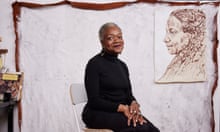
Claudette Johnson’s art for Cotton Capital nominated for Turner prize

‘Not even a pipe dream’: John Akomfrah represents Britain at Venice Biennale

German art museum fires worker for hanging his own painting in gallery

‘Englishness is constantly revised’: Umbro exhibition shows evolution of football shirts

Marlborough Gallery: ‘blue chip’ art institution to close after nearly 80 years

Ron’s Place: Birkenhead flat of outsider art granted Grade II listing

‘Sport is never just sport’: Olympics exhibition in Paris reflects 20th century’s highs and lows

Piero della Francesca’s Augustinian altarpiece reassembled after 450 years

Liverpool museum appeals for information on subject of The Black Boy
Most viewed.

IMAGES
VIDEO
COMMENTS
Journey kicked off the '80s with a trio of very different farewell projects as co-founder Gregg Rolie left the band. The Top 10 hit Departure arrived first as a proper studio album, selling three ...
Journey is an American rock band formed in San Francisco in 1973 by former members of Santana, the Steve Miller Band, and Frumious Bandersnatch. The band as of 2024 consists ...
of 08. "After the Fall". Album Cover Image Courtesy of Columbia. Perhaps the most underappreciated vital track from Journey's peak '80s period, this tune doubles effectively as a power ballad and mid-tempo rocker. The band happened to be a master of that format during this era, but here the lines are blurred wonderfully between lighter-worthy ...
The History Of Journey's Music. Published Oct 29, 2020 By Gayle Asunto. via journey/YouTube. ... An early progenitor of "arena rock", they reached their peak between 1978 and the early '80s. With Perry's smooth tenor and amazing range, their songs have stood the test of time. Their first LP with him, "Infinity" was an immediate ...
Journey's band history is the epitome of 80s rock and the clashes between some of the most extraordinary rock musicians of the time. Like all Journey fans, the first songs I heard were Steve Perry's lead emotional ballads. He was the perfect singer for the ideal backing band. Yet, listening years later as a musician, I understood that it ...
Explore Journey's discography including top tracks, albums, and reviews. Learn all about Journey on AllMusic. ... Anthemic arena rock outfit who achieved huge success in the 1970s and '80s thanks to musical prodigy Neal Schon and smooth tenor Steve Perry. Read Full Biography. STREAM OR BUY: Active. 1970s - 2020s. Formed
Journey's official live video for 'Don't Stop Believin'' performed in Houston. Listen to Journey: https://journey.lnk.to/listenYDWatch more Journey videos: h...
That version showcased Journey's early-'80s lineup (minus Cain) at the peak of their increasingly rare heavy-rocking form. Same here, with Castronovo in place of Steve Smith. They miss Perry's ...
We're bringing you the stories behind your favorite band's songs and sounds. As their name suggests, Journey's career has been an epic adventure since day one. A meteoric force in the stadium rock scene, Journey insured their legacy in rock 'n' roll history using a mix of musical virtuosity, soaring balladry and undeniable appeal. 00:00.
Call the style what you will-arena rock, stadium rock, concert rock-Journey dominated in the '70s and '80s. Journey performed ballads and scorchers with equal skill and passion led by Neal Schon's remarkable guitar and the soaring vocals of Steve Perry. Pat Monahan of Train Inducts Journey
A power ballad in the best Journey tradition. 8. Lovin, Touchin', Squeezin' (1979) Anyone who thinks that Journey aren't capable of anything other than slushy ballads really should check out Lovin, Touchin', Squeezin' from 1979's Evolution album. It has a funk groove, and while the tempo is very much of the balladic kind, Neal Schon ...
Official HD Video for "Any Way You Want It' by JourneyListen to Journey: https://journey.lnk.to/listenYDWatch more Journey videos: https://Journey.lnk.to/lis...
2. Singles. 52. Soundtrack albums. 1. American rock band Journey has released 15 studio albums, five live albums, 11 compilation albums, and 52 singles since 1975.
Gregg Rolie was born on June 17, 1947, in Seattle, Washington, and is an American keyboardist and singer. He was a founding member of Journey and joined the band in 1973. Rolie played keyboards and was the lead vocalist on the band's first three albums: "Journey" (1975), "Look into the Future" (1976), and "Next" (1977).
Journey "Don't Stop Believin'" (Live 1981: Escape Tour - 2022 HD Remaster) Photo : Courtesy Photo. More than a billion Spotify streams, a Library of Congress National Recording Registry placement ...
Journey is universally loved. Every generation standing right now has been moved by at least one of their many classic rock standards. Steve Perry, Neal Sch...
Journey is one of the most influential arena rock bands of the 1970s and '80s. However, the first few years were rough going. Between 1973 and 1976, Journey released three studio albums, all of which failed to meet the expectations of Columbia Records, which nearly dropped the band. In 1977, Steve Perry became the new lead singer, and things ...
Journey is an American rock band from San Francisco, California.Formed in February 1973 as the Golden Gate Rhythm Section, the group was renamed Journey in the summer and originally included keyboardist and vocalist Gregg Rolie, lead guitarist Neal Schon, rhythm guitarist George Tickner, bassist Ross Valory and drummer Prairie Prince.The band's lineup as of 2021 features Schon, alongside ...
Greatest Hits 2 — November 1, 2011. 11. Greatest Hits I & II — 2011. Soundtracks: 1. Dream, After Dream — December 10, 1980. Conclusion: Journey's conclusion is a testament to their legendary status. With albums like "Escape," "Frontiers," and "Raised on Radio," the band solidified their place in rock history.
Let's face it, Journey was one of the most prominent bands of the 80s that they top almost all of today's hit playlist, the biggest one being Don't Stop Believing (1981). But as for one of our personal favorites, Separate Ways (Worlds Apart), it peaked on the Billboard Hot 100 charts and spent four weeks as the first on the Top Tracks chart.
Journey USA is the closest thing to '70s & '80s Journey music you'll ever hear!. Start with a singer who was hired to do vocal work for Steve Perry during his solo career. Add the rest of the band—a guitarist who played and penned multiple hits for Grammy nominee, Great White in the '80s MTV era, a drummer who also toured with Great White, and a veteran multi-instrumentalist with 3 ...
Our menu selections change with every show. However, it is always a multi-course dinner consisting of set appetizers, a choice of dinner entrée and a choice of dessert. The dinner entrée choices always include beef, chicken, seafood or pork, and a vegetarian selection. Upgrades for Prime Rib are available on the night of your show!
This week, Journey's Greatest Hits, the singles-packed compilation from the band, hits 800 weeks on the Billboard 200. It ranks as the third-longest-charting title on the ranking of the most ...
Track listing:01. Only the Young 00:00 02. Don't Stop Believin' 04:1903. Wheel in the Sky 08:30 04. Faithfully 12:42 05. I'll Be Alright Without You 17:12 06...
The '80s-set musical centers on an unexpected bromance between a dog and a robot. ... definitely, been one of the most gratifying experiences on this long journey."
NEW PROVIDENCE, NJ - Gov. Livingston High School has earned the No. 80 spot in New Jersey, as per U.S. News & World Report's latest 2024 Best High Schools rankings. With a student body of...
'A bit surreal': First female 'Cup Keeper' talks about her trailblazing journey with hockey's grail 1 of 2 | Cup Keeper Miragh Bitove is photographed with the Stanley Cup at the Hockey Hall of Fame in Toronto on Thursday, April 11, 2024.
Art historians have struggled to piece together the painting's journey between 1925 and 1961. The auction house said the painting's journey during the Nazi period was "unclear".